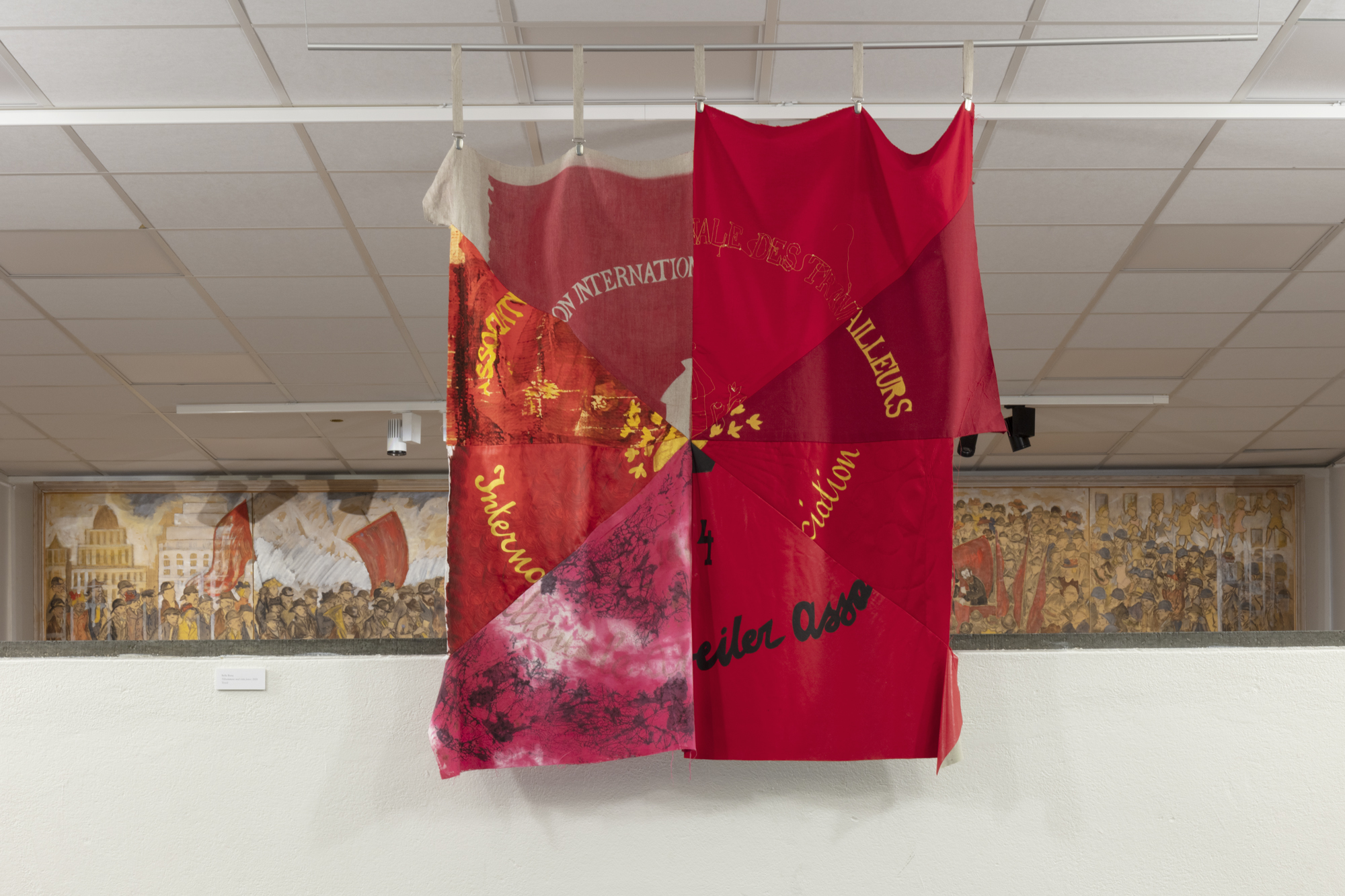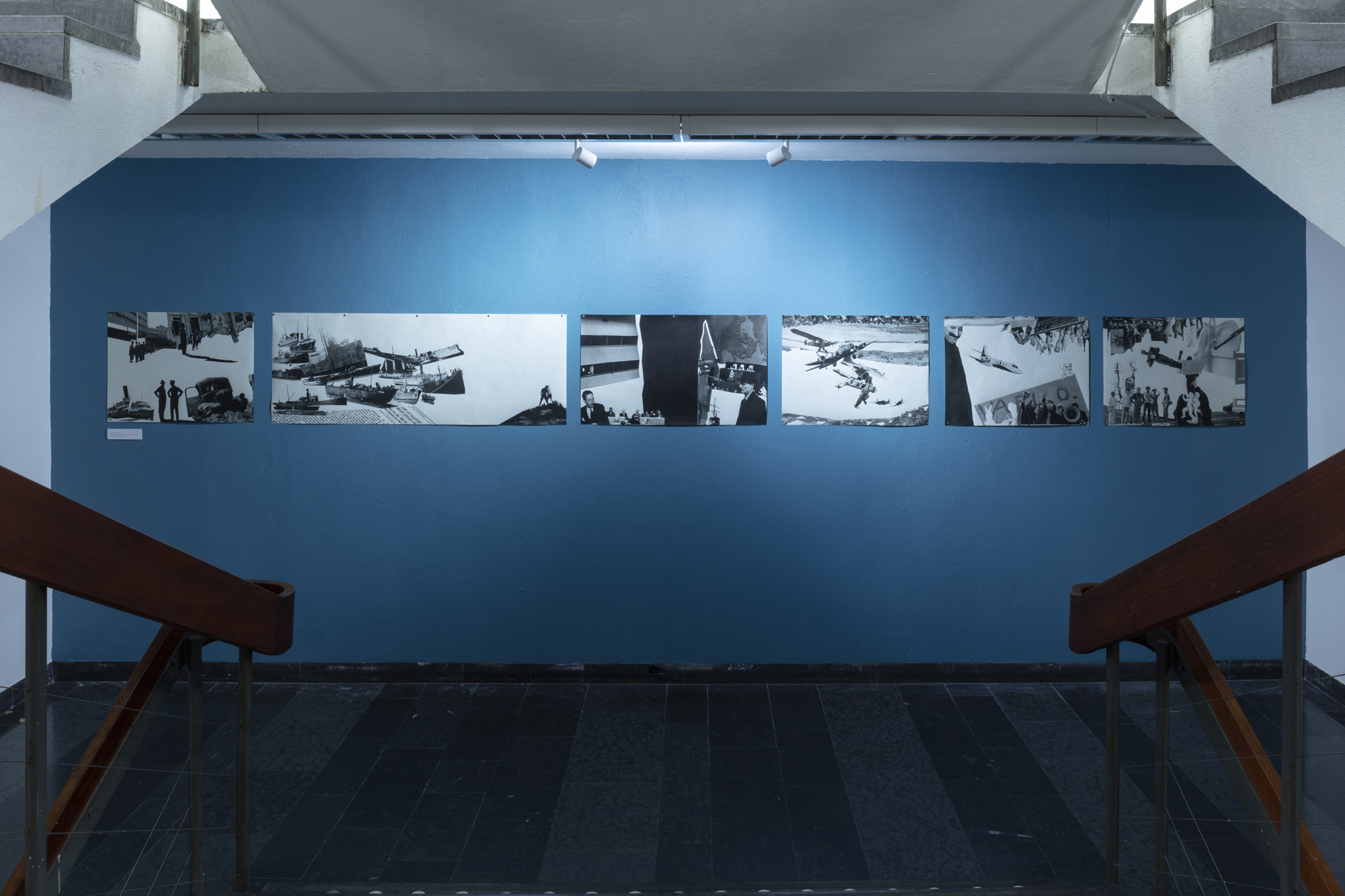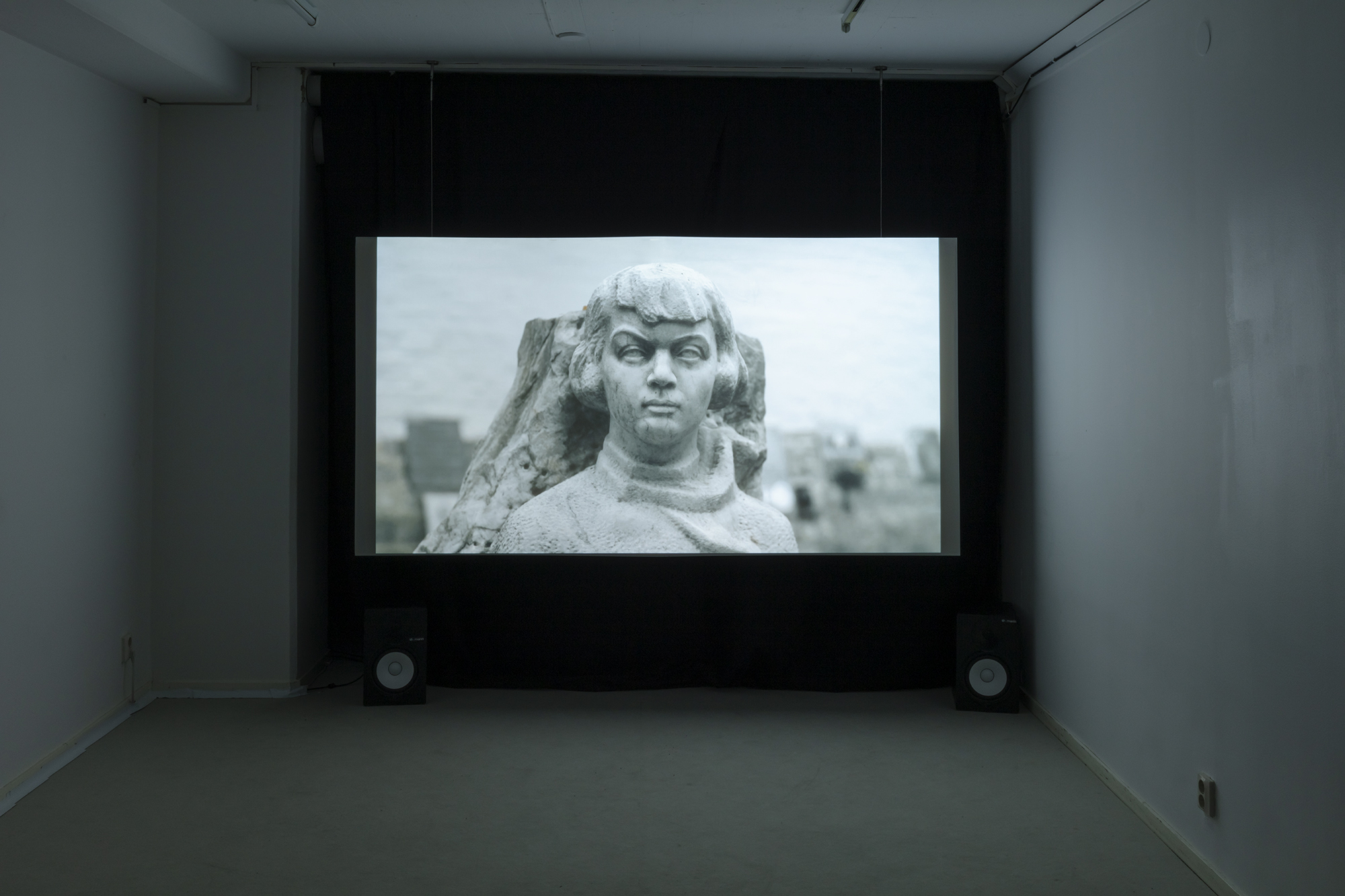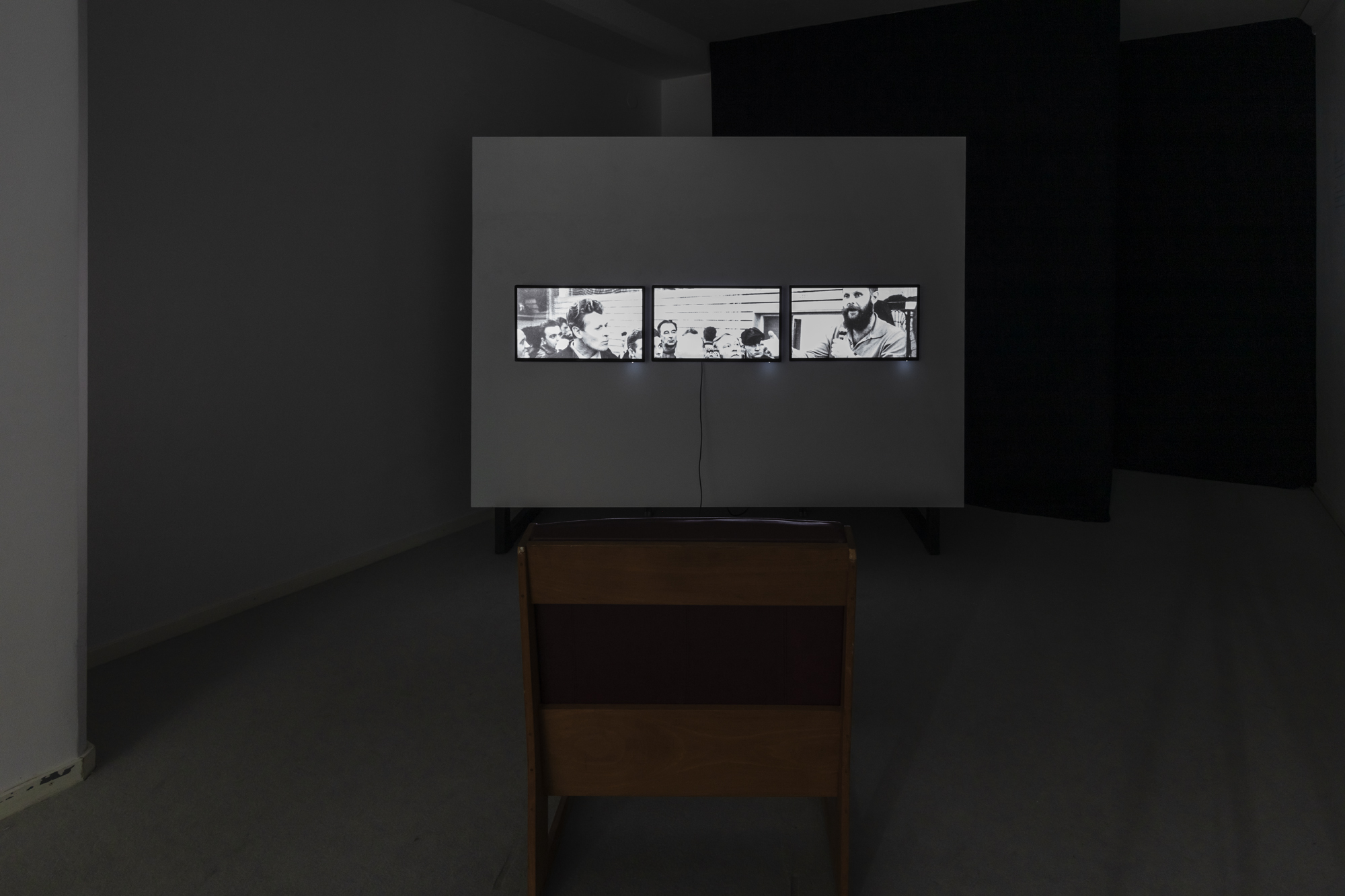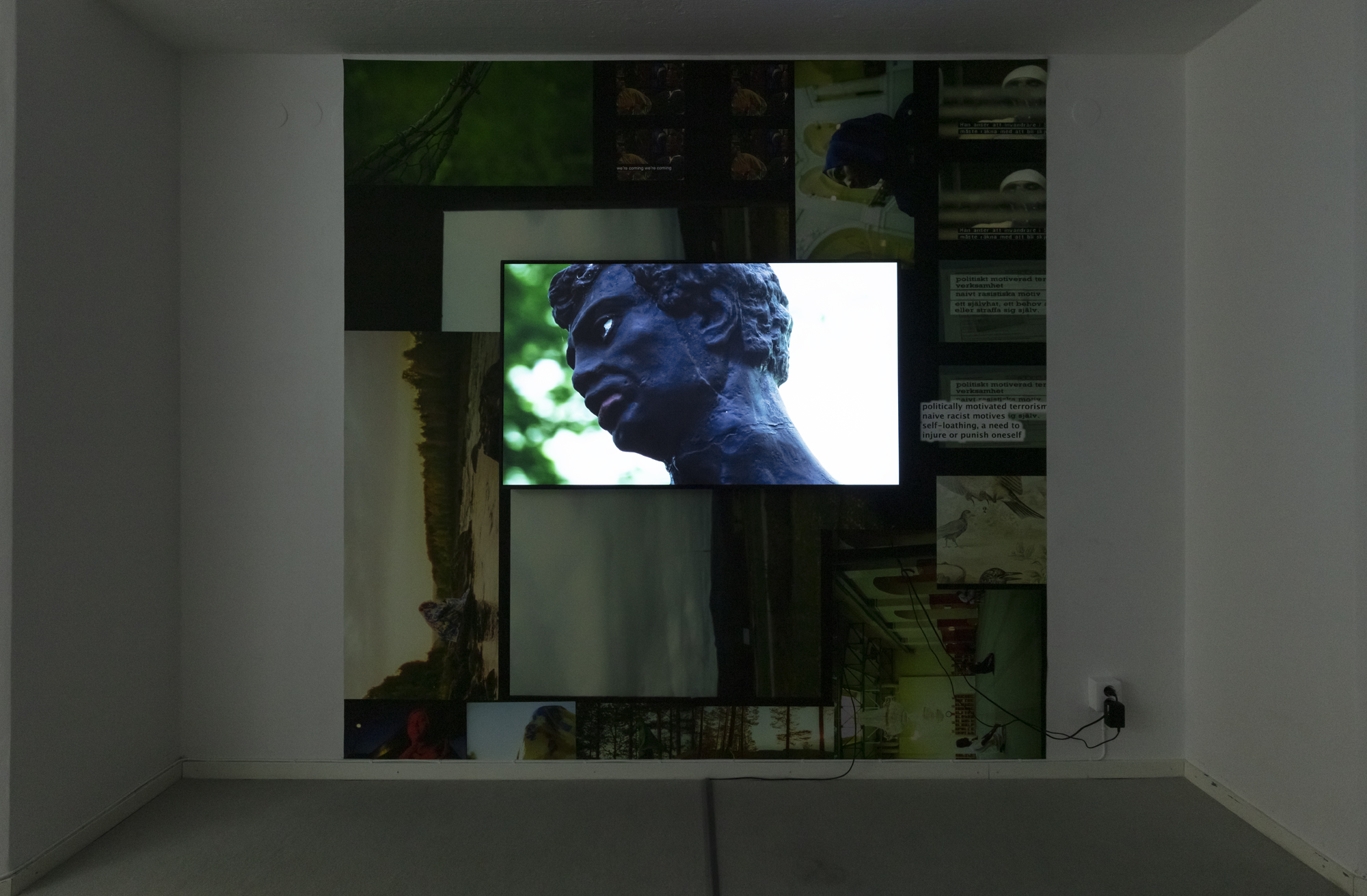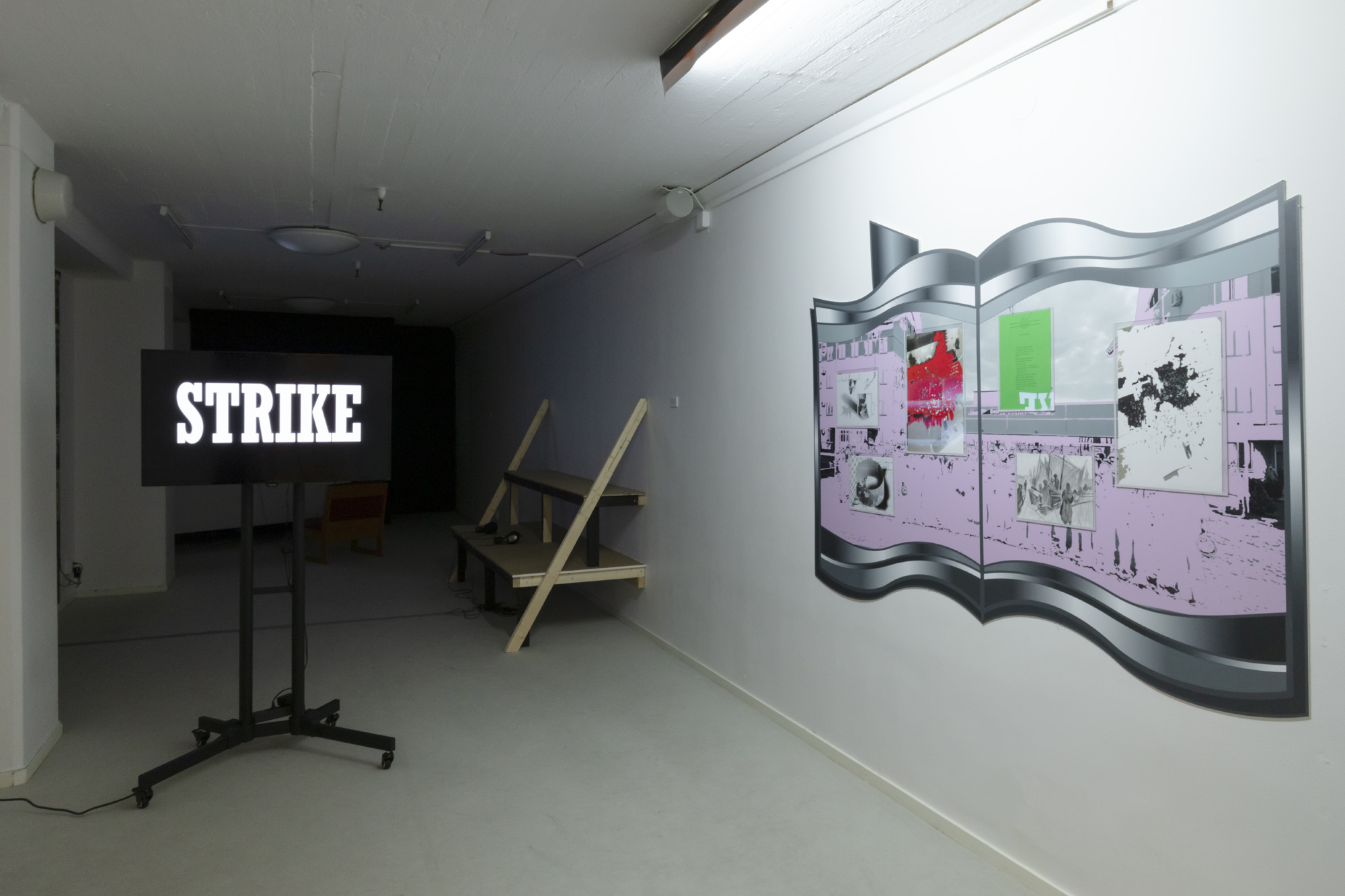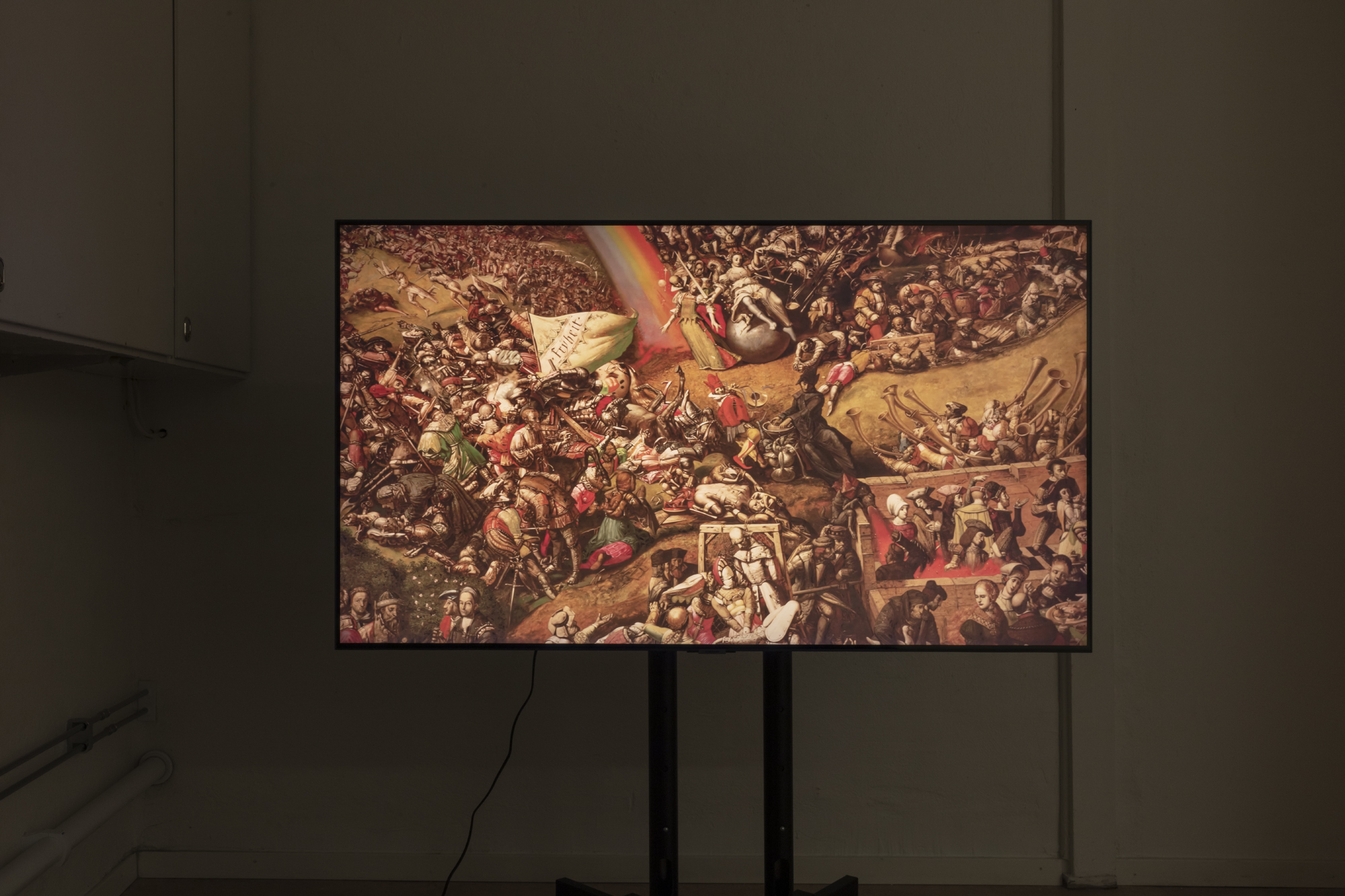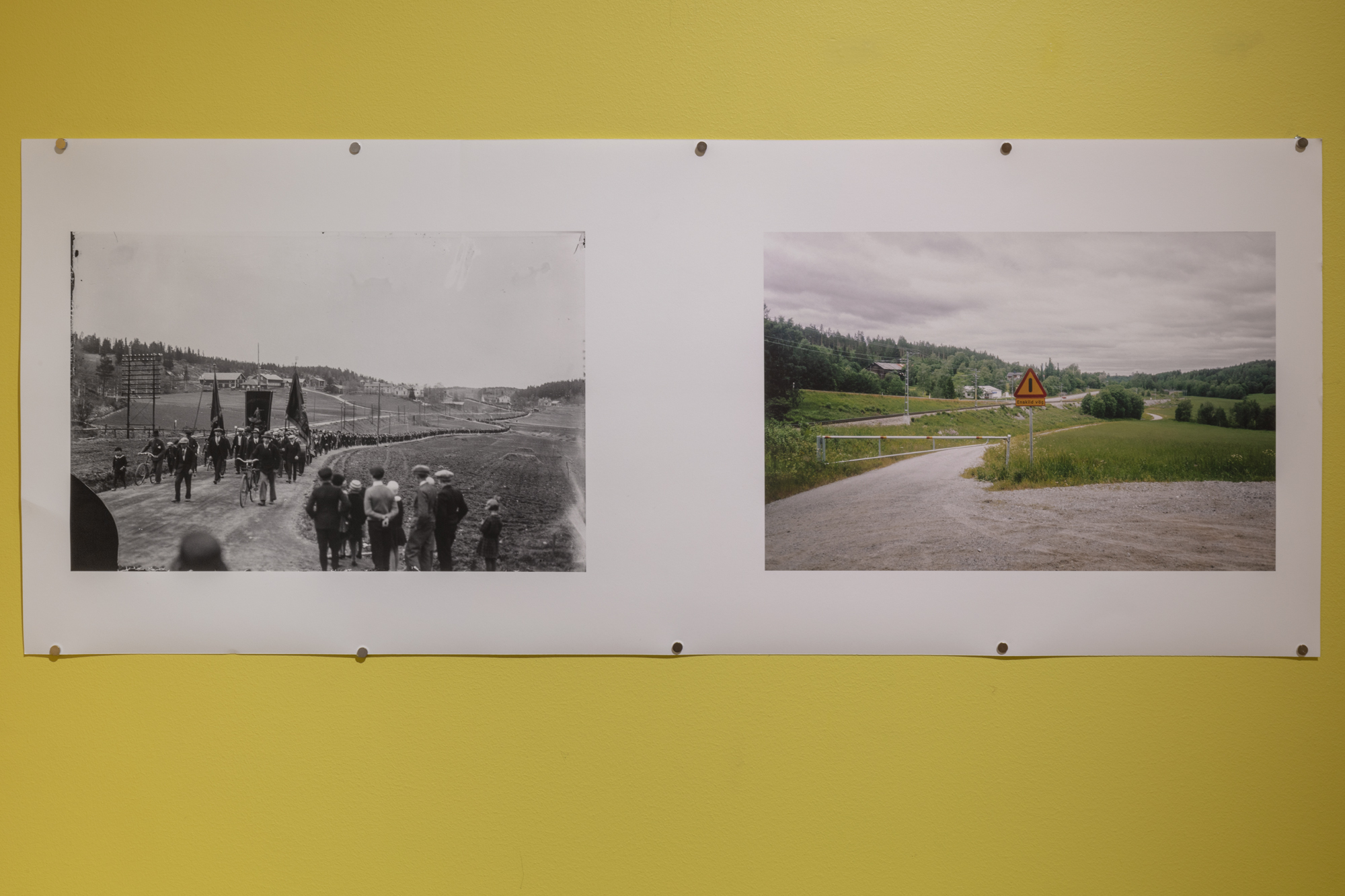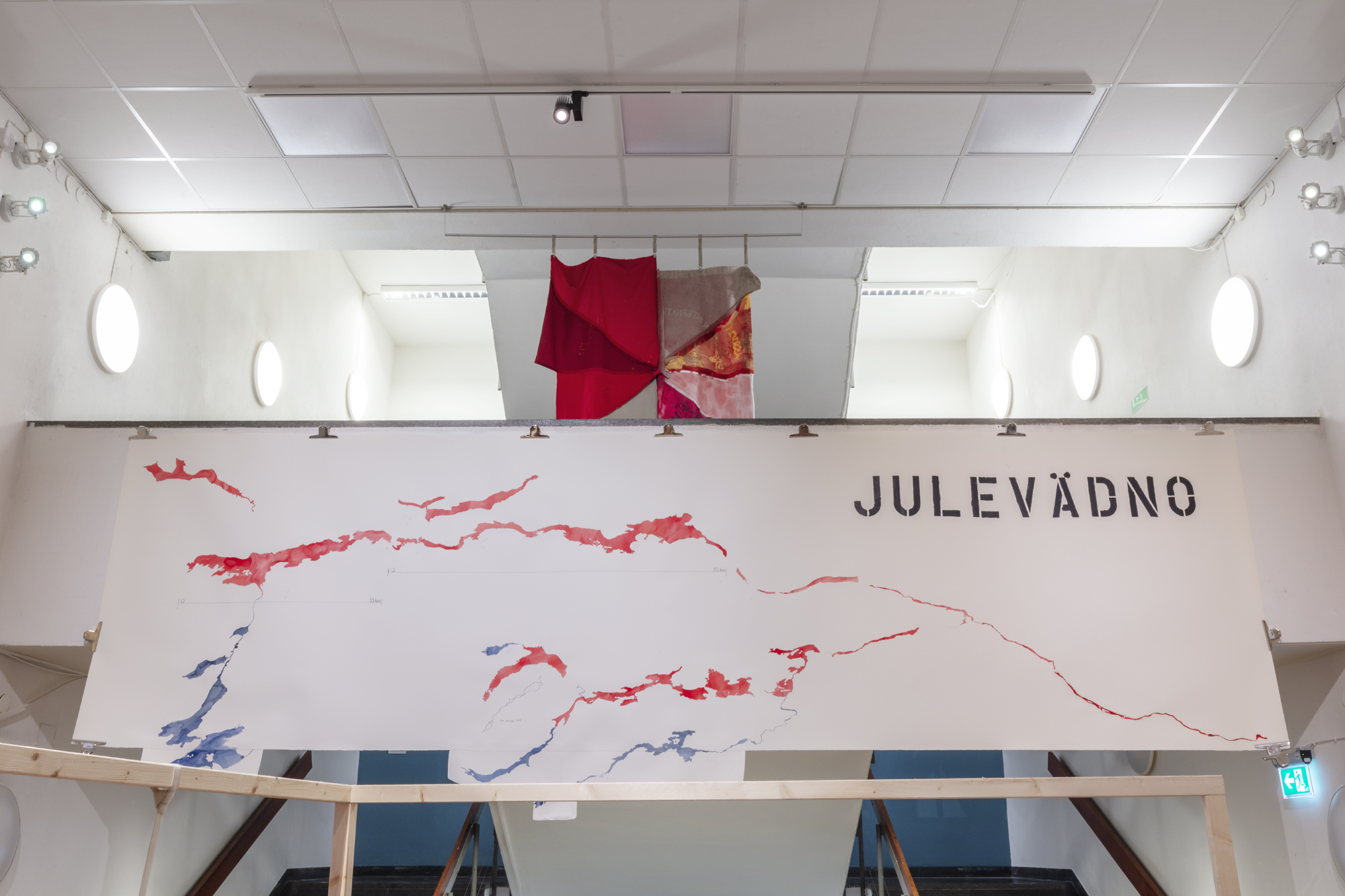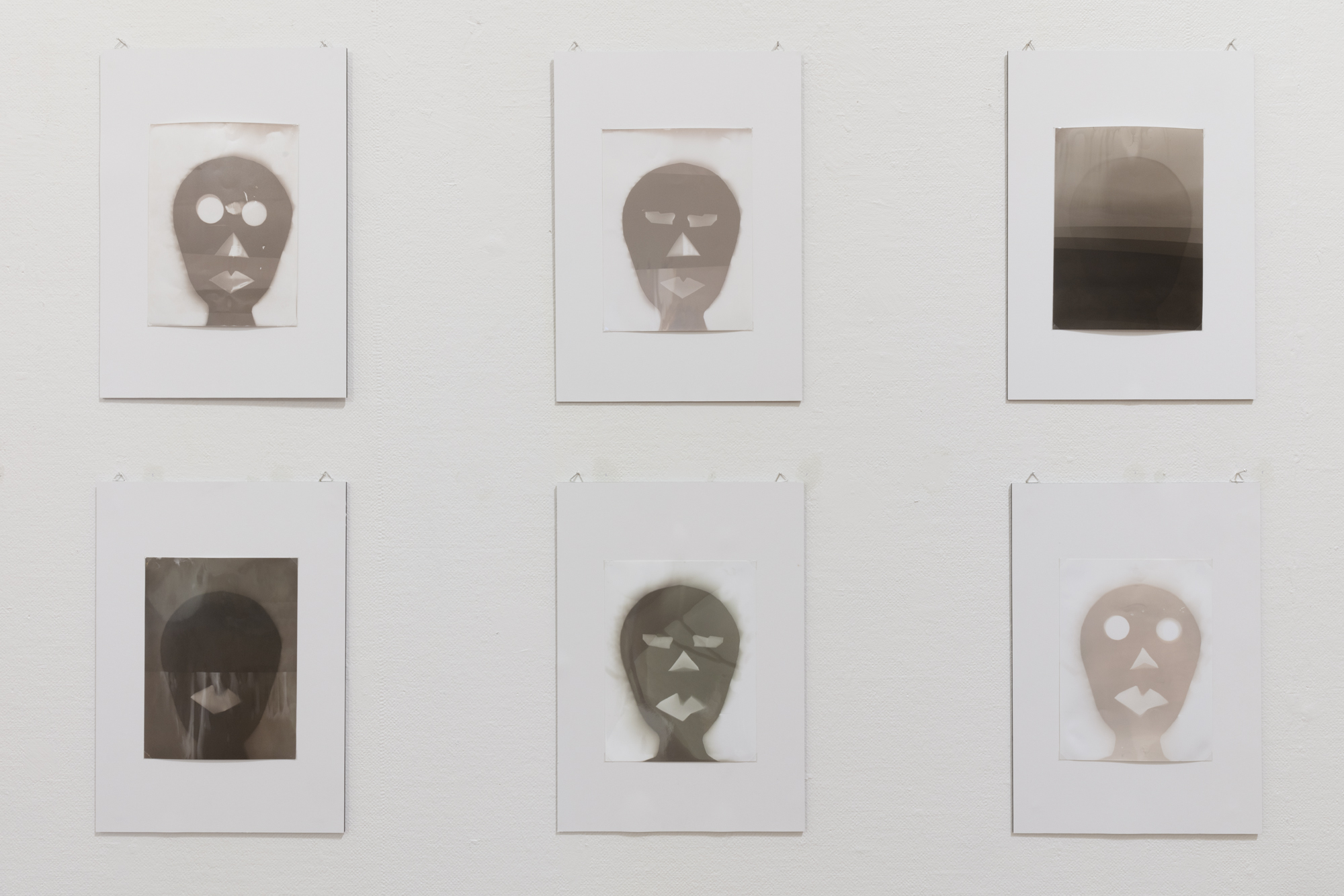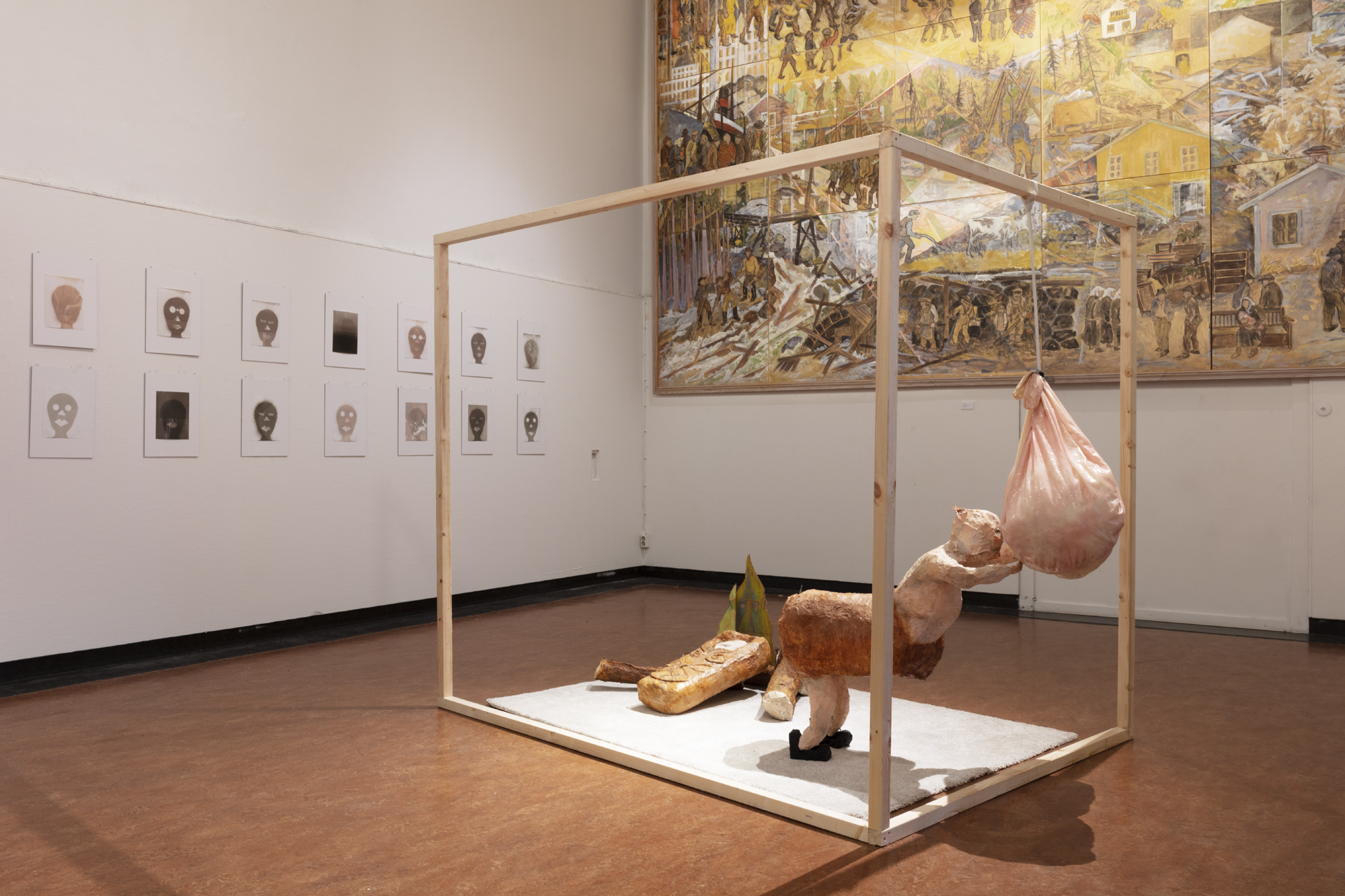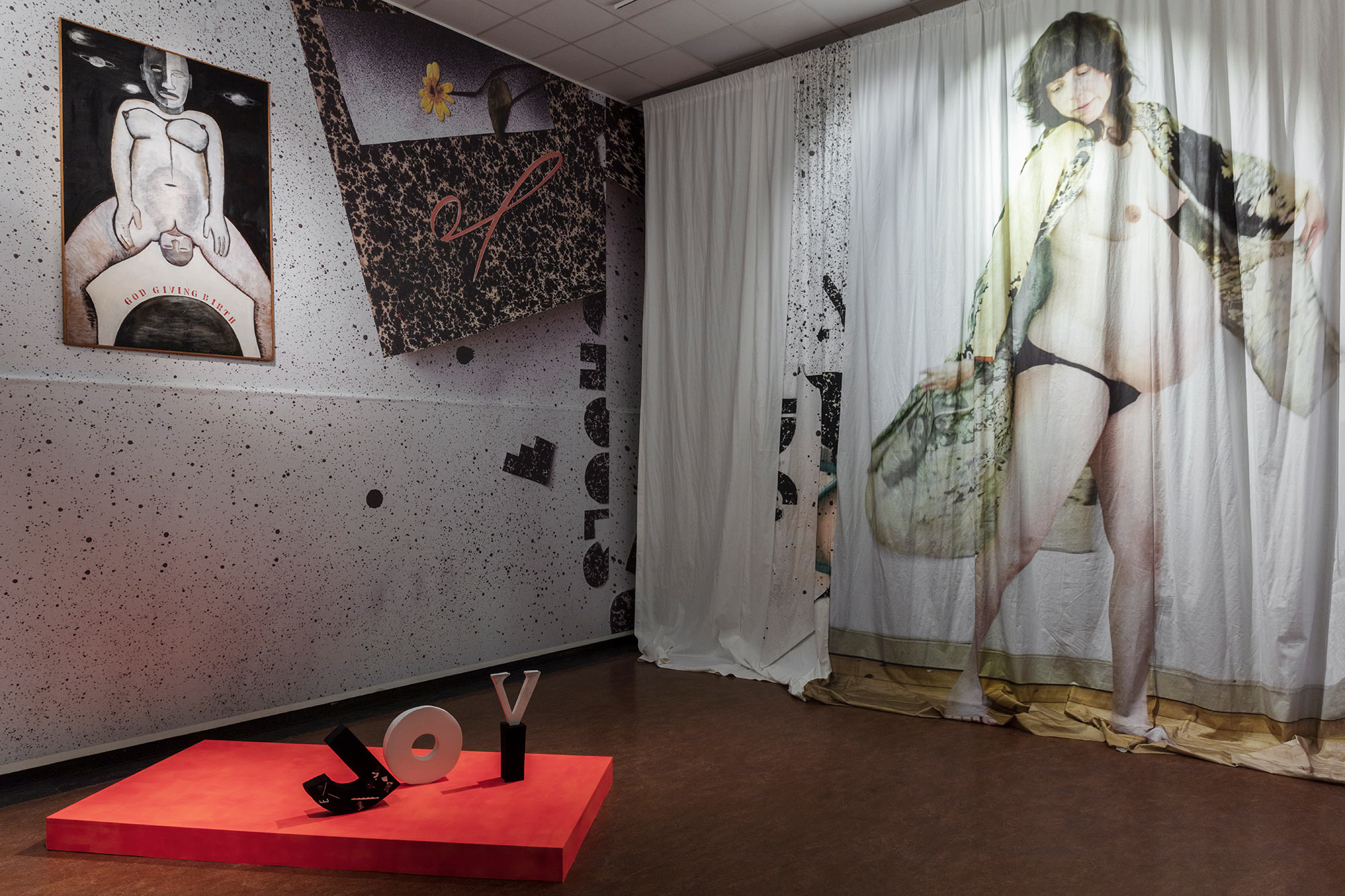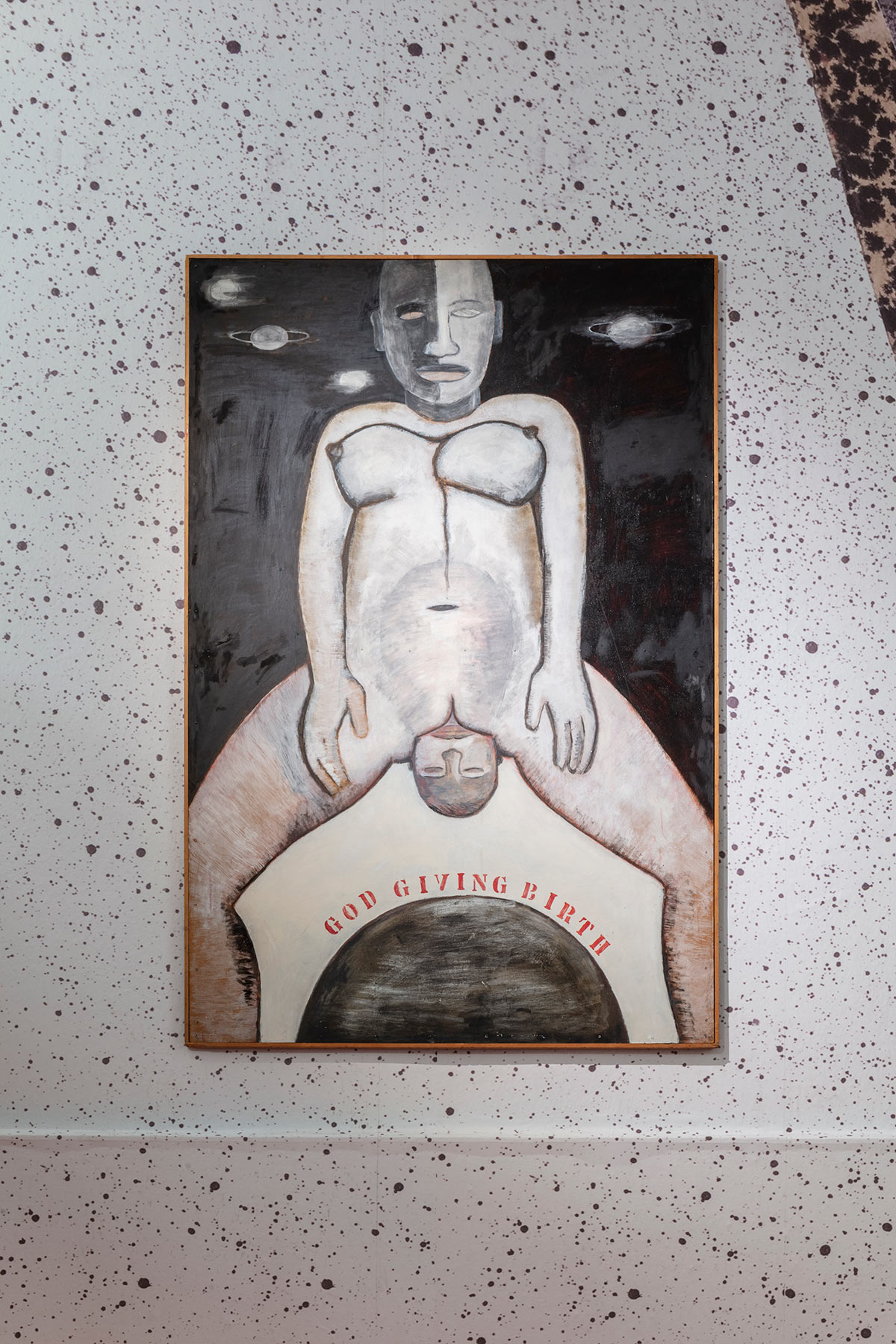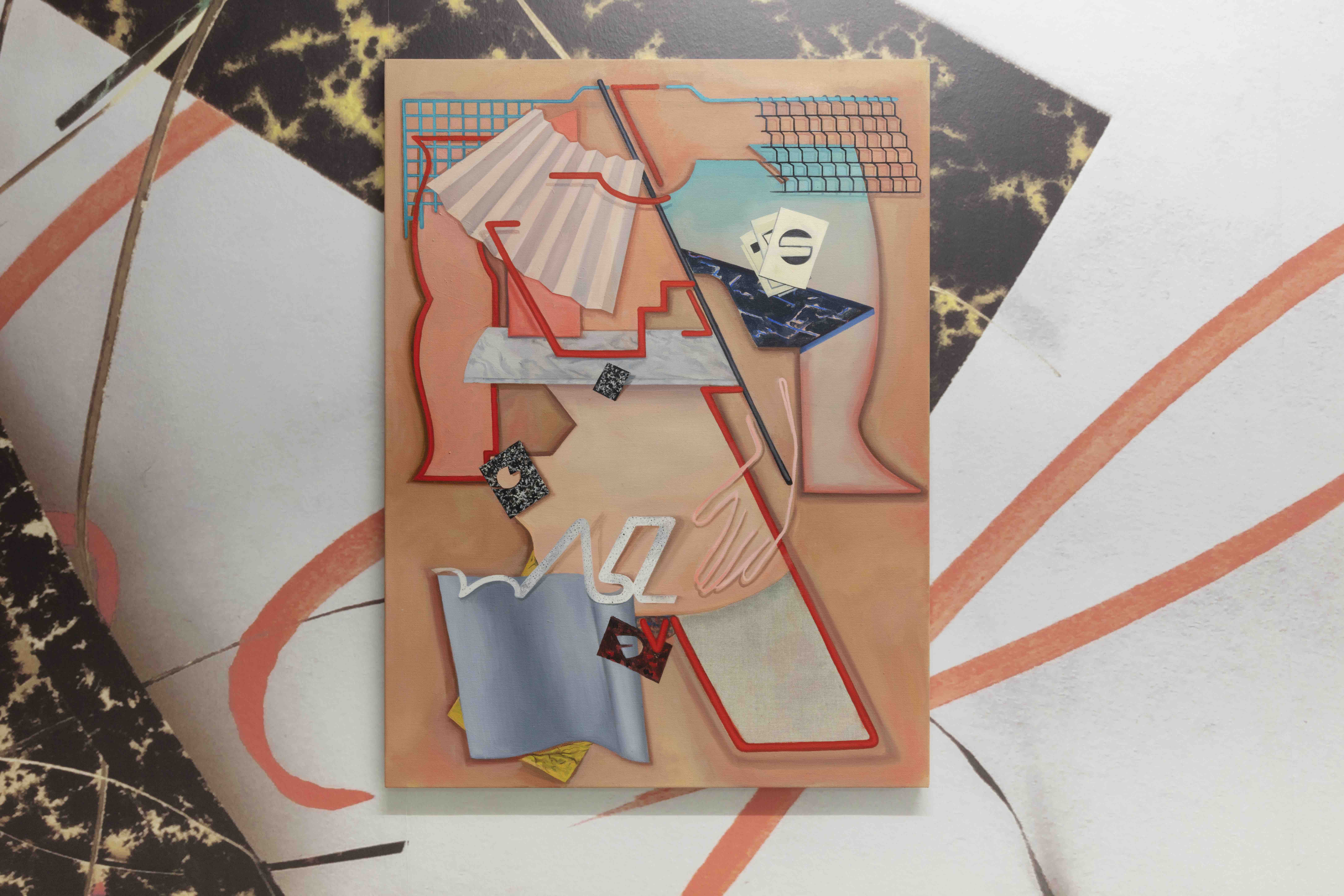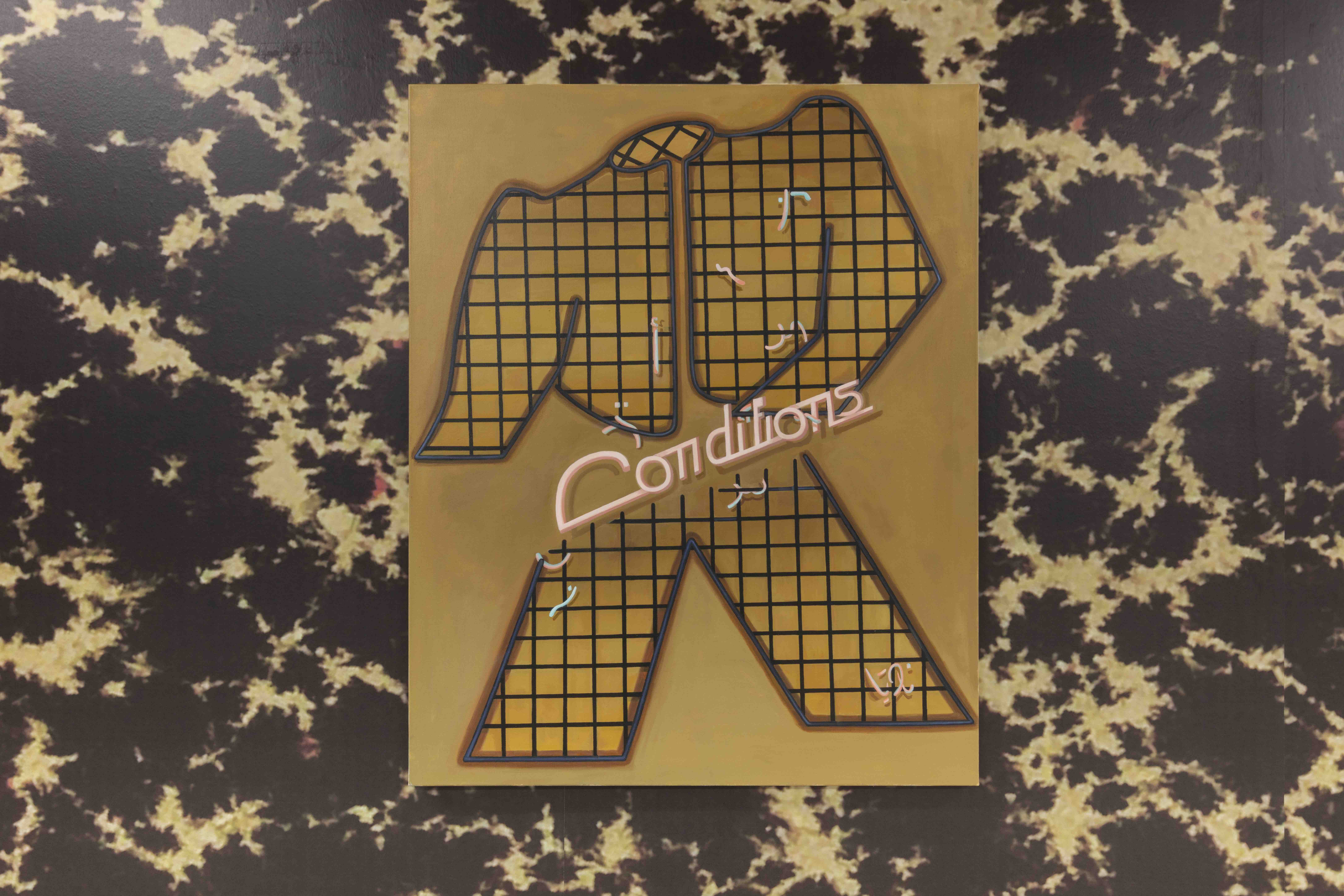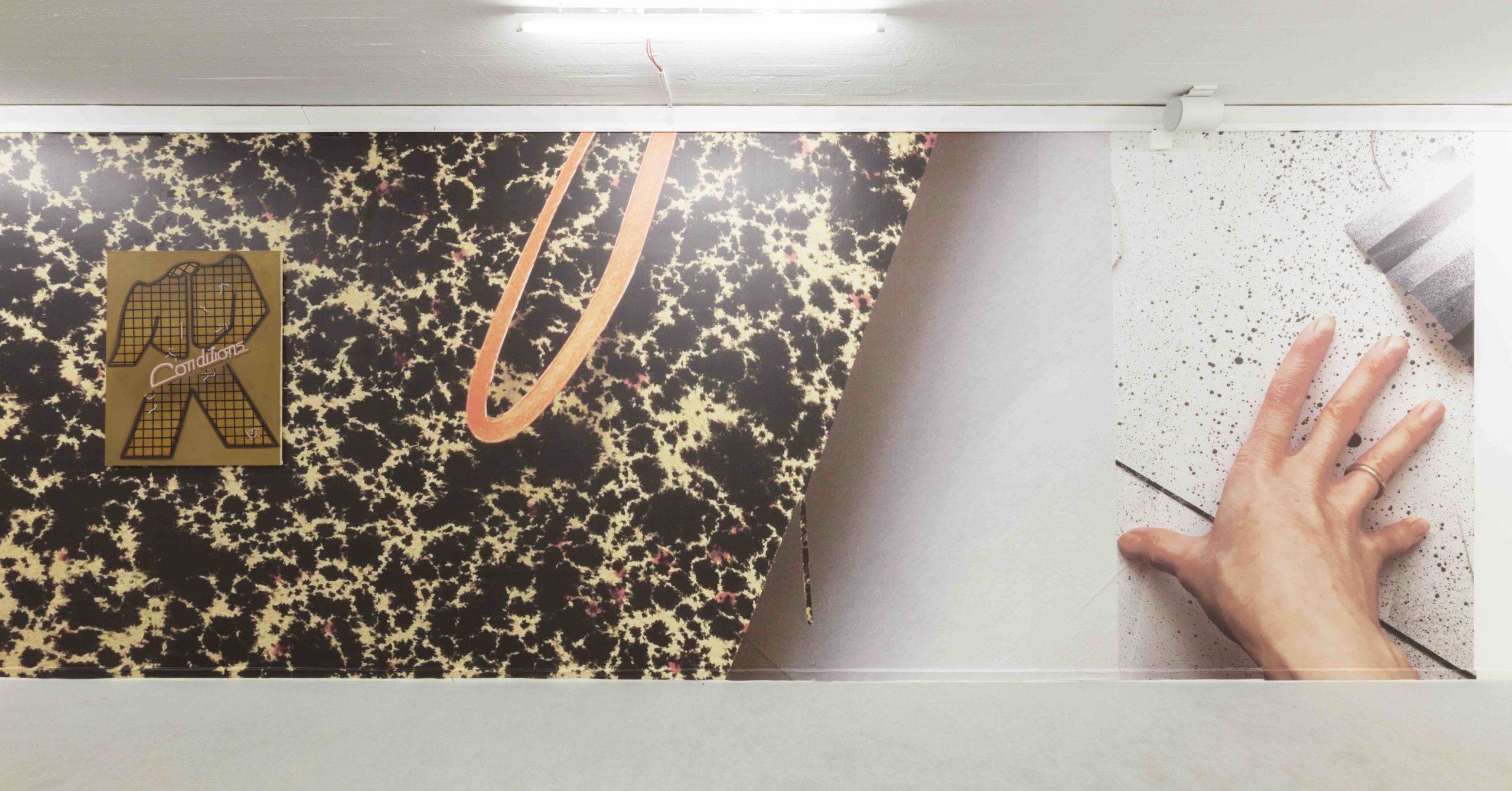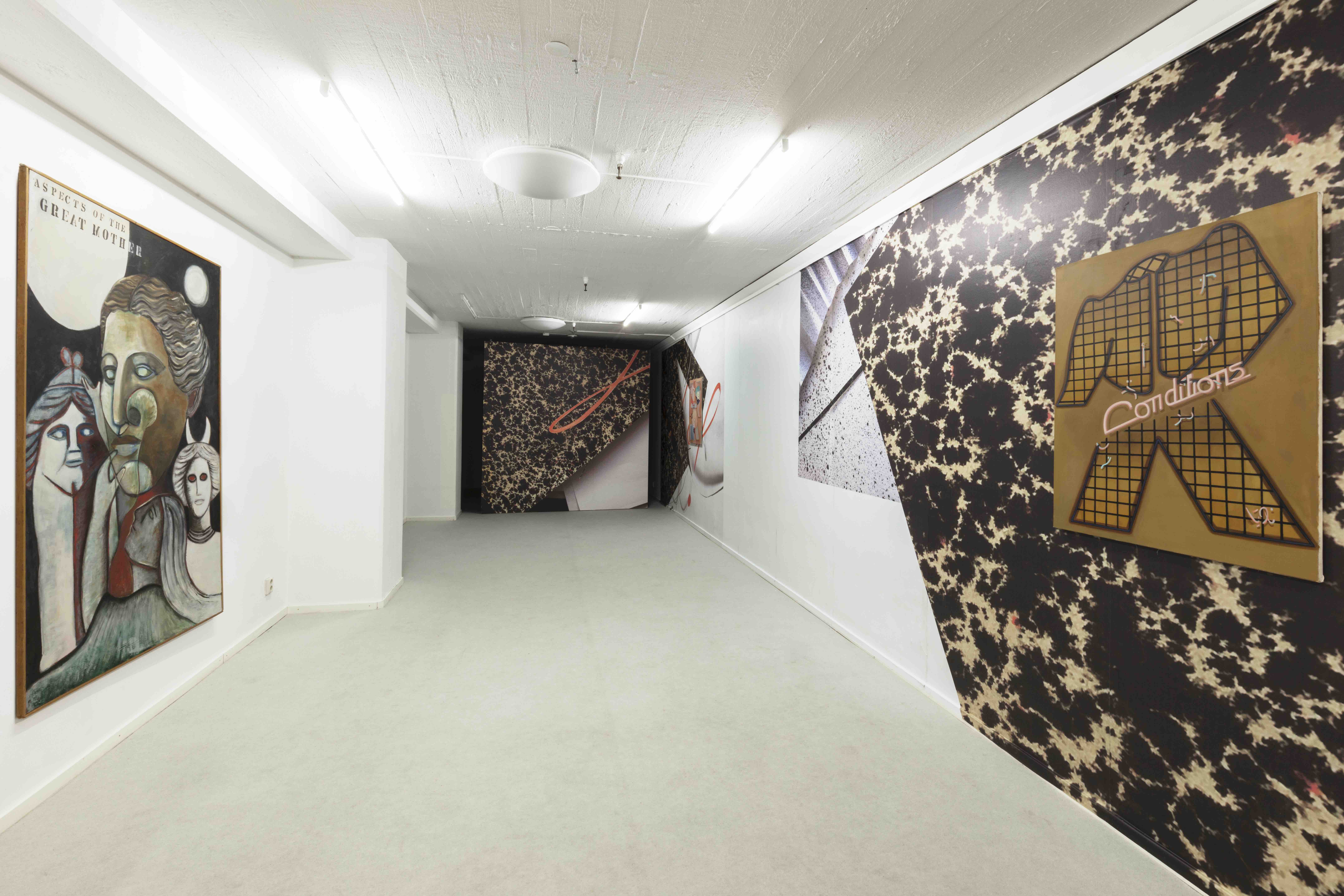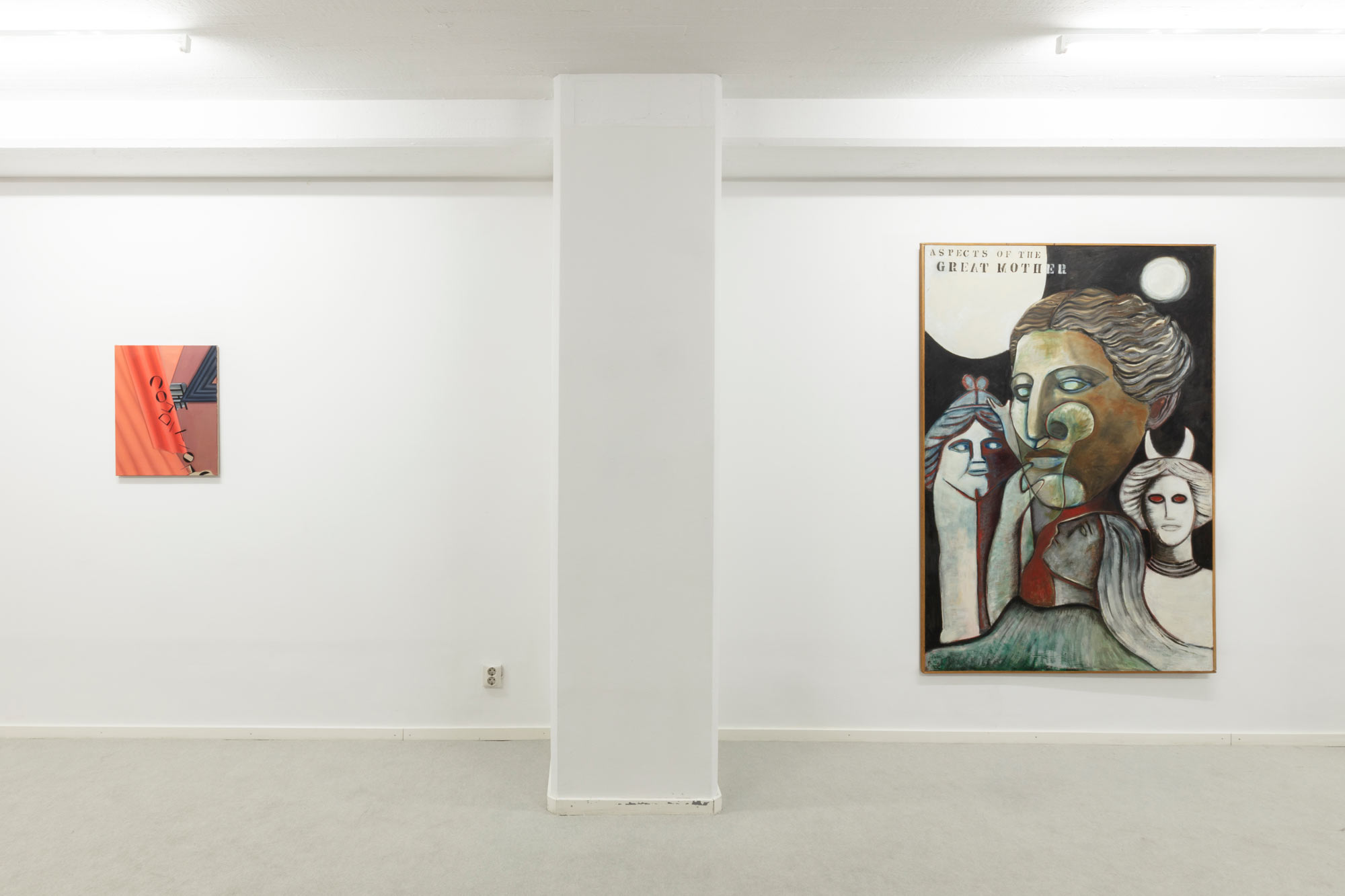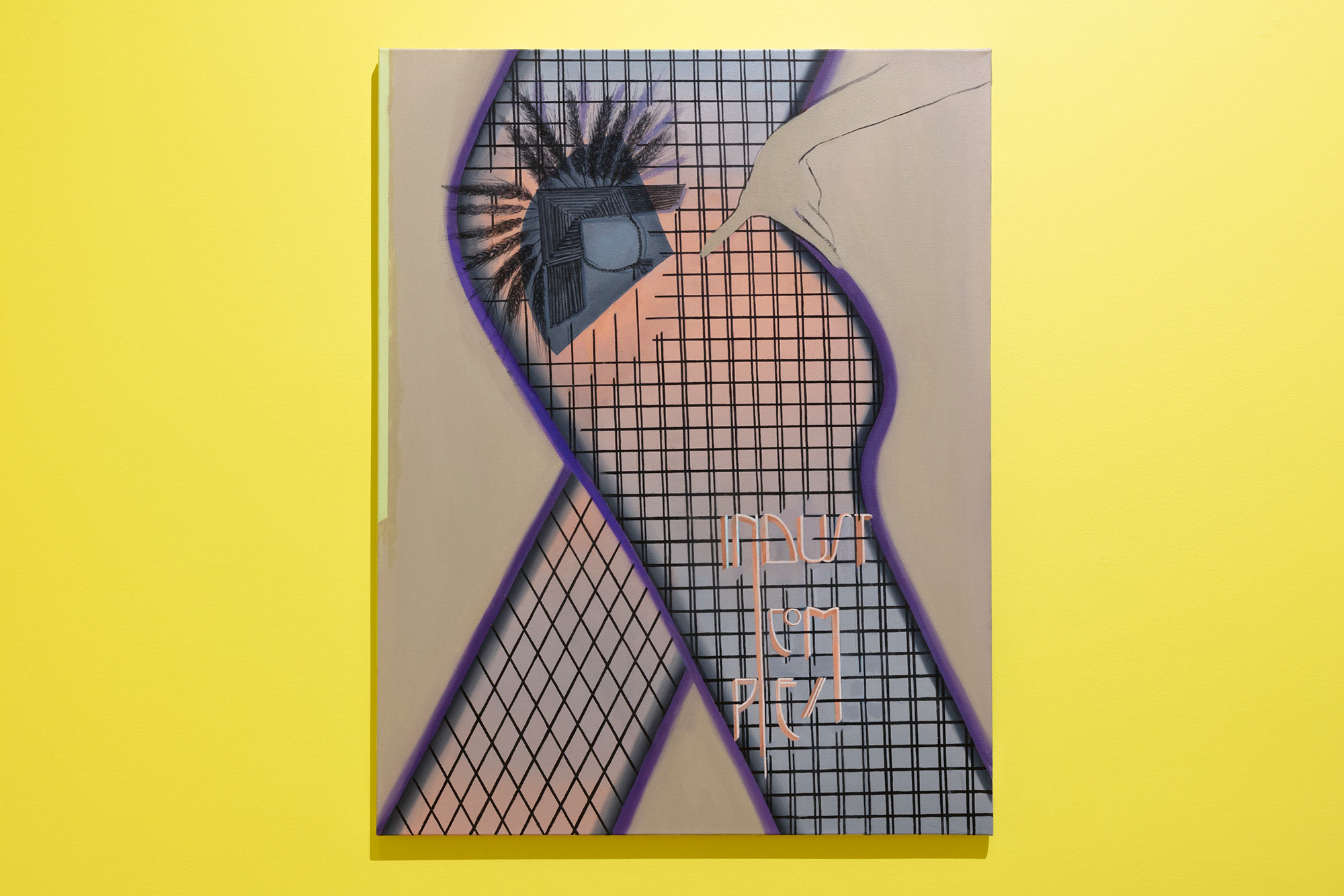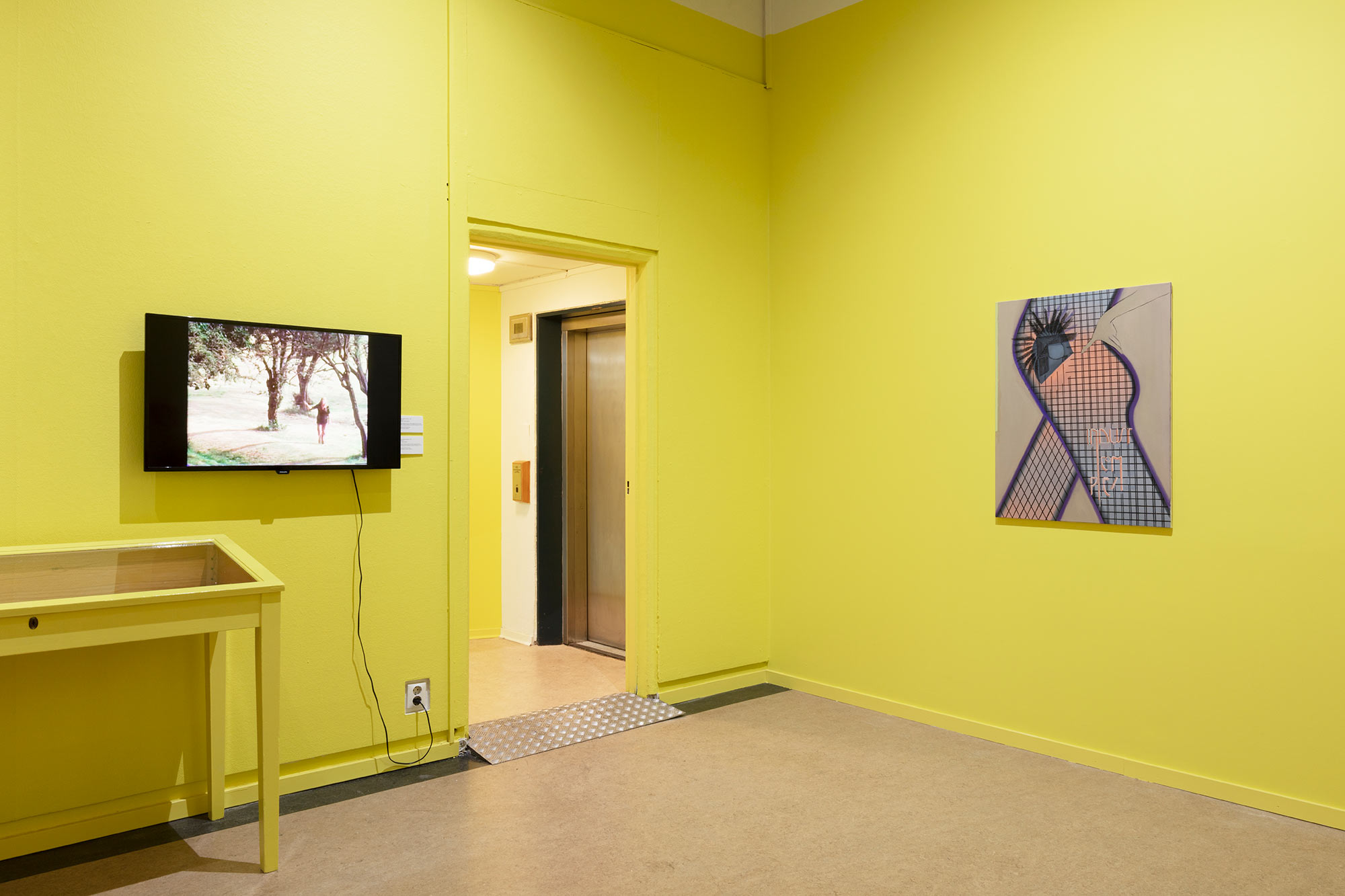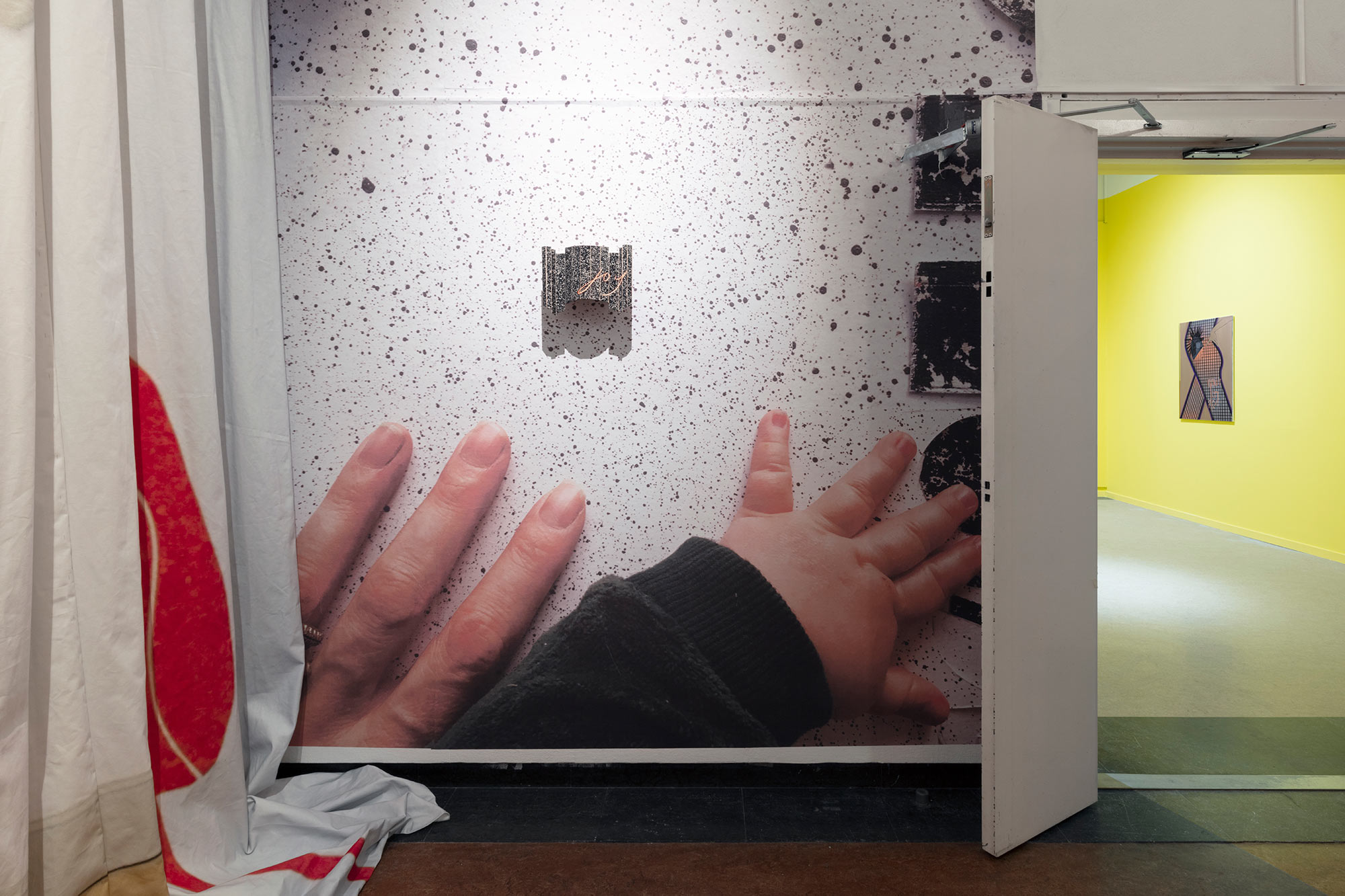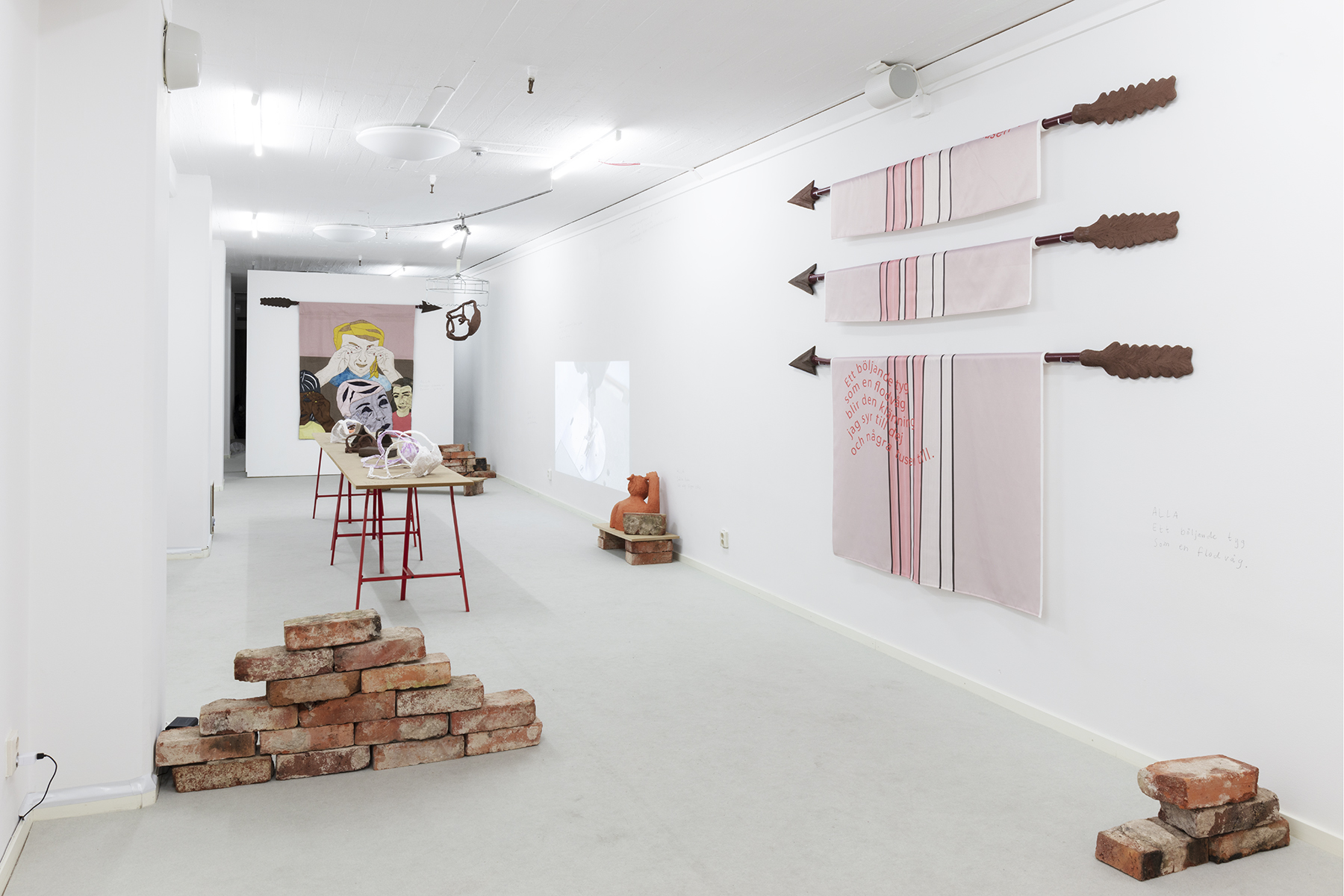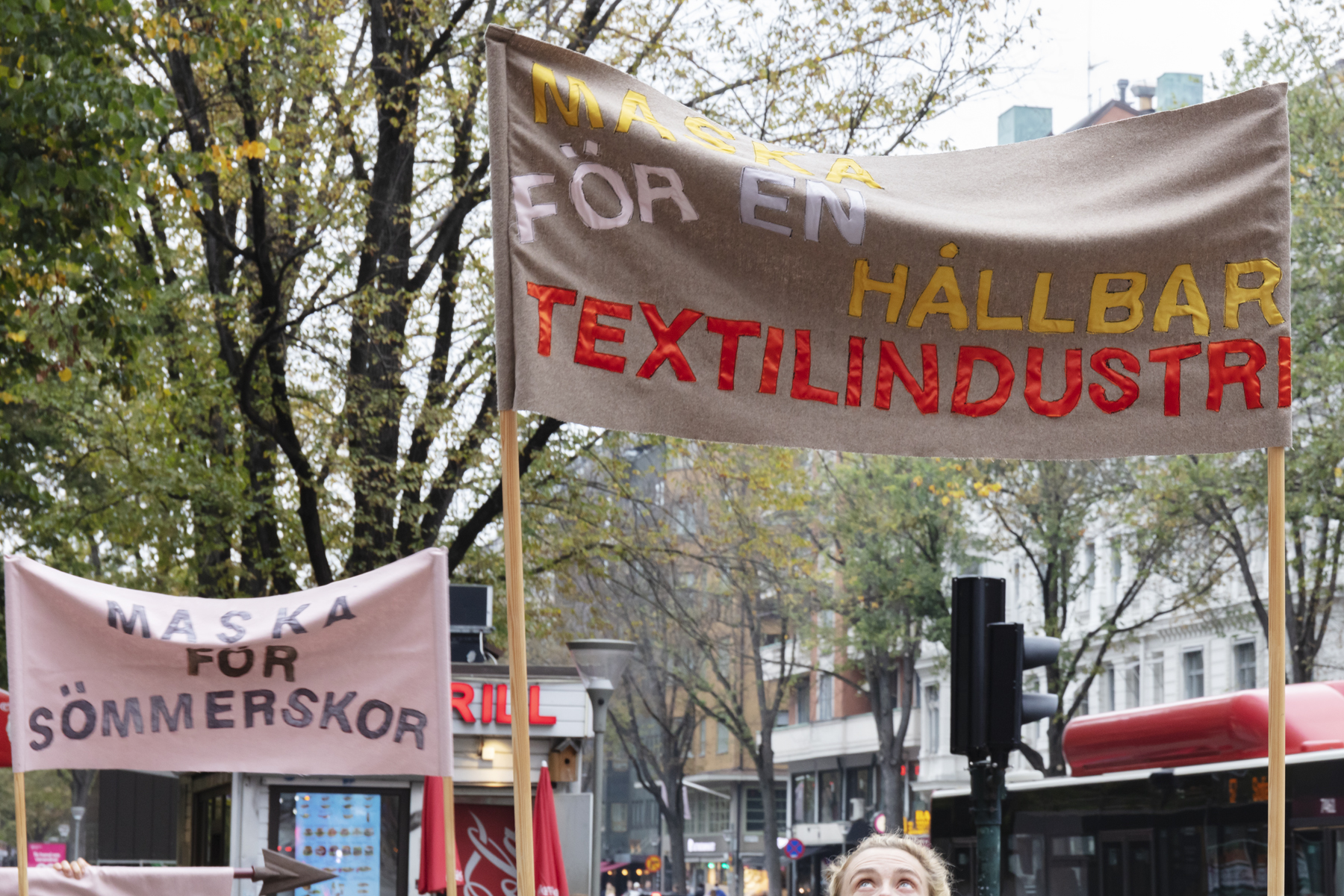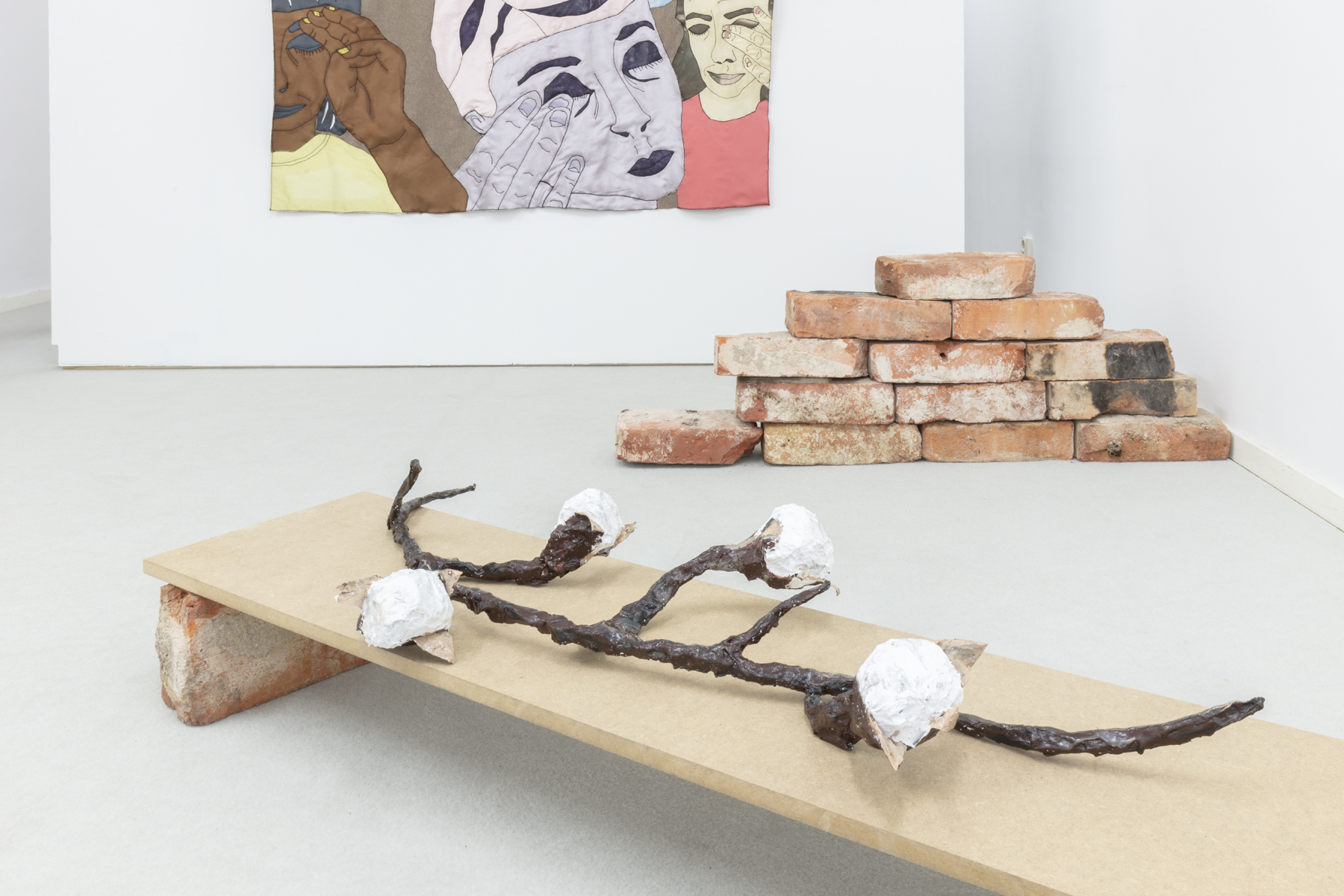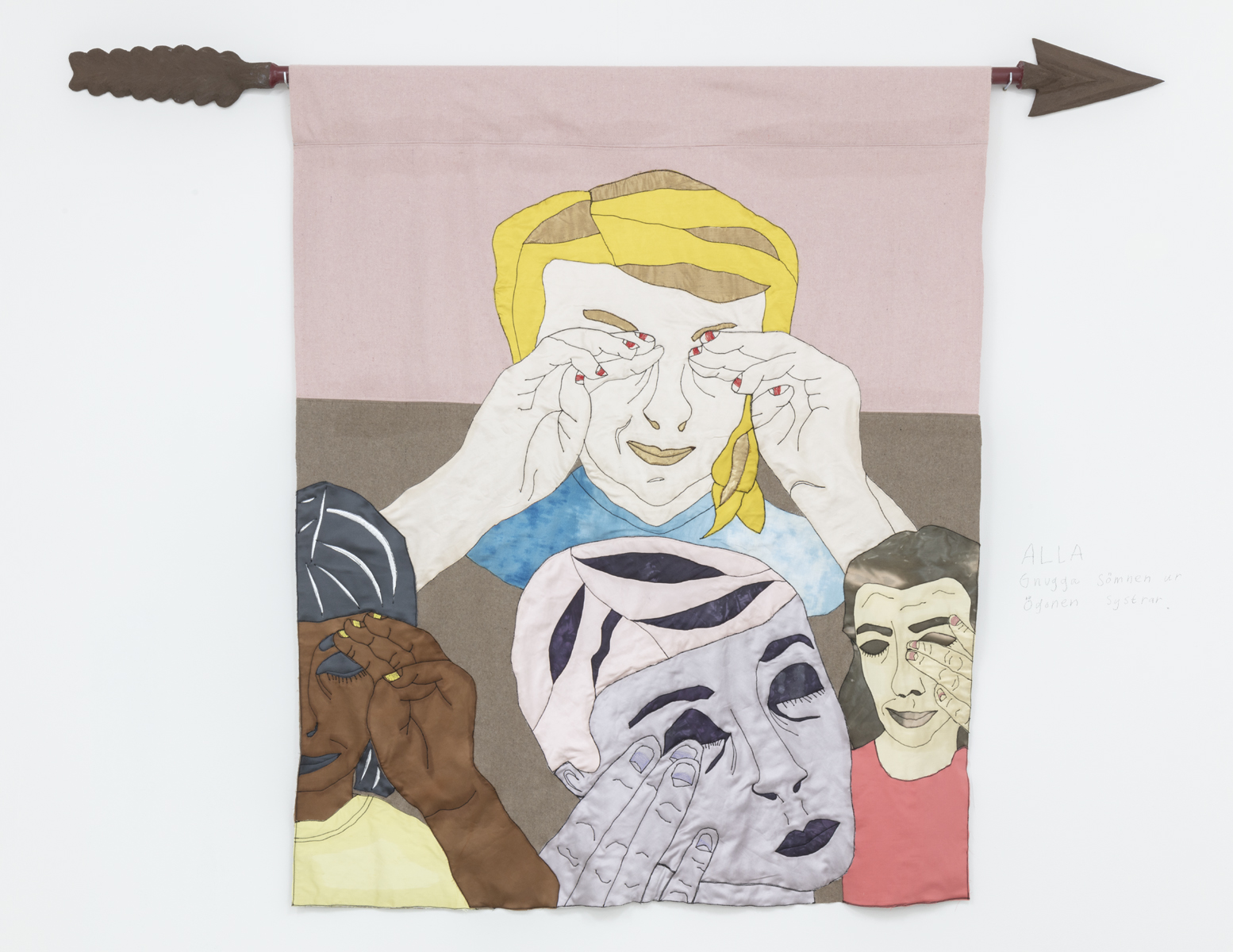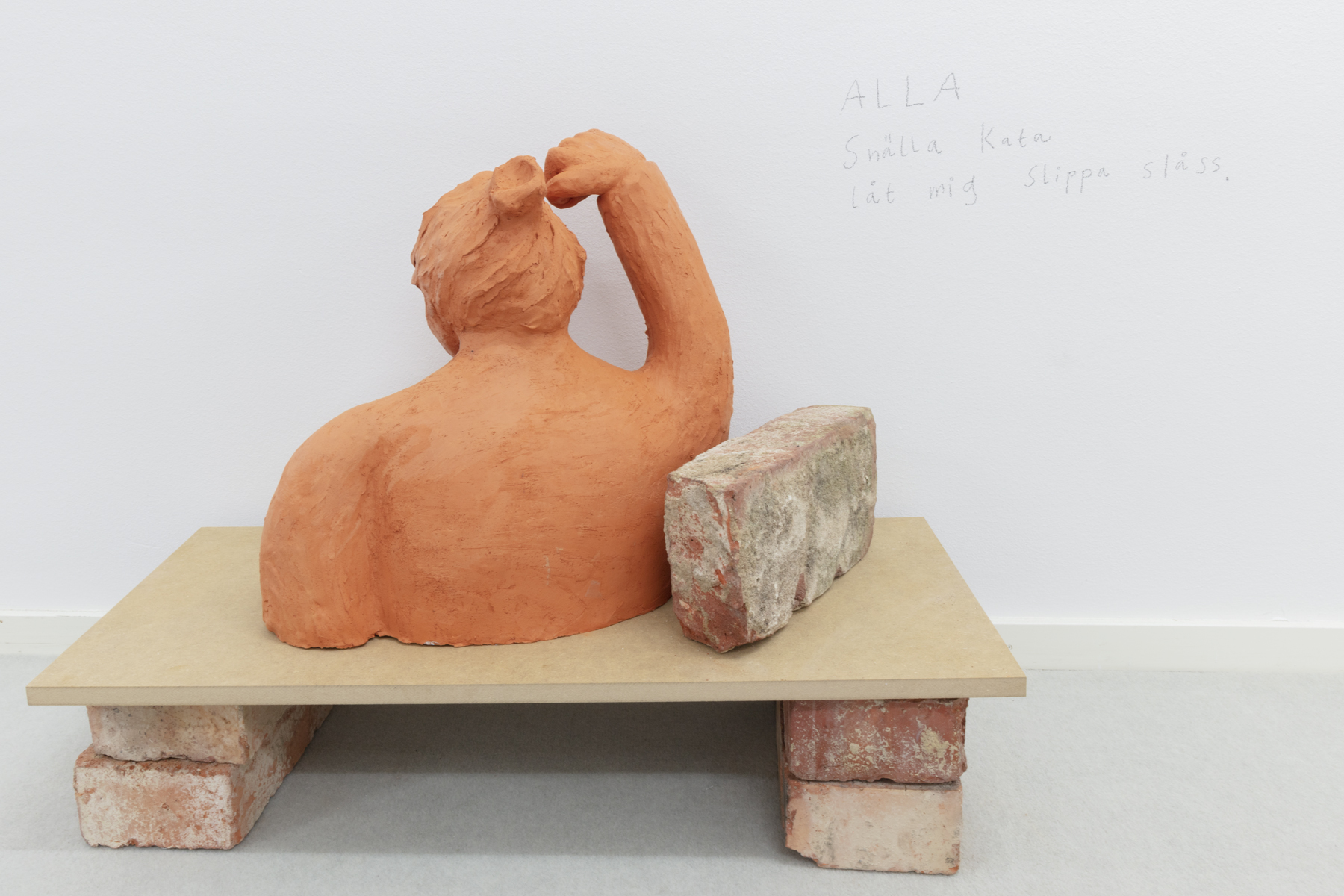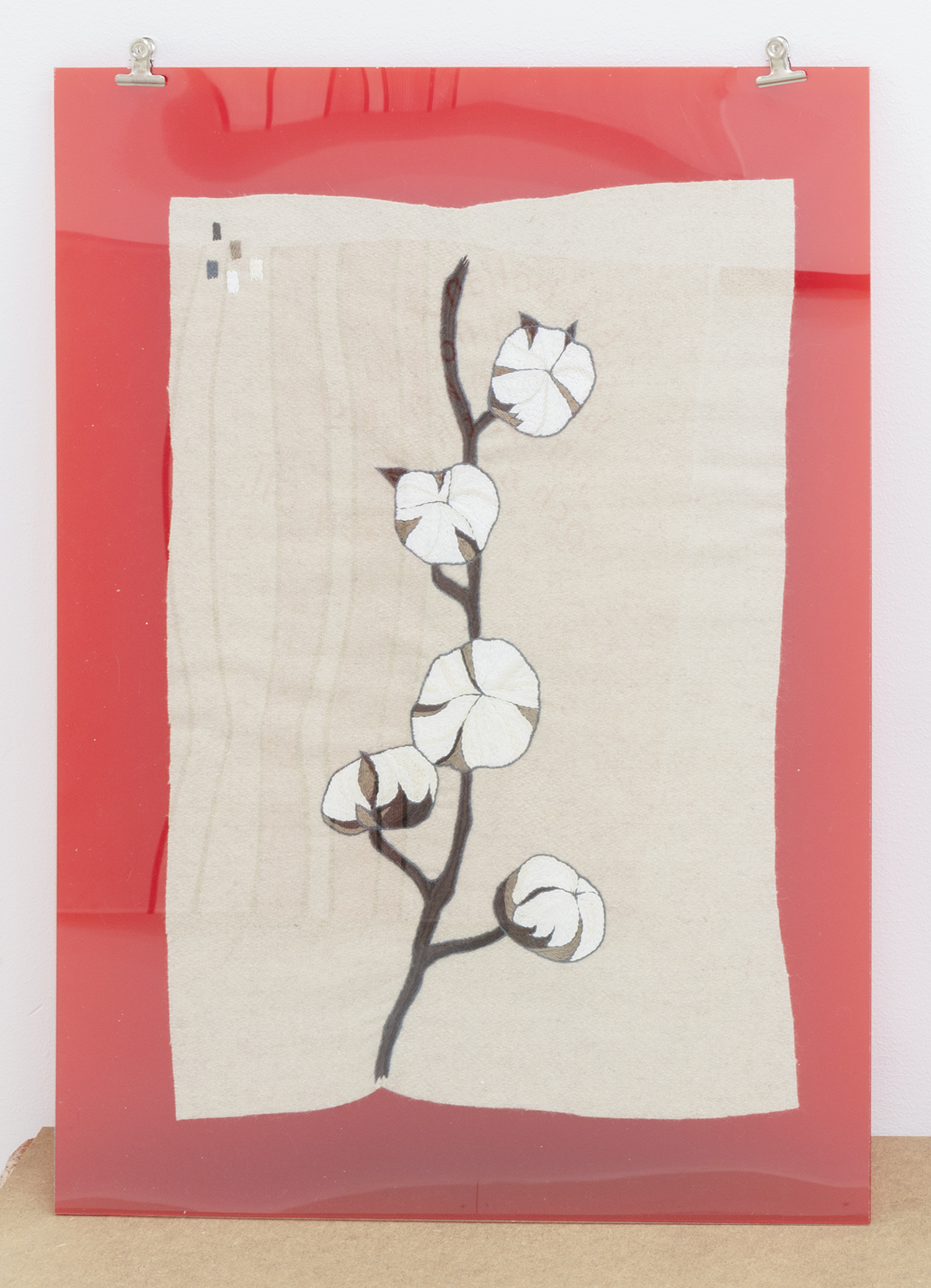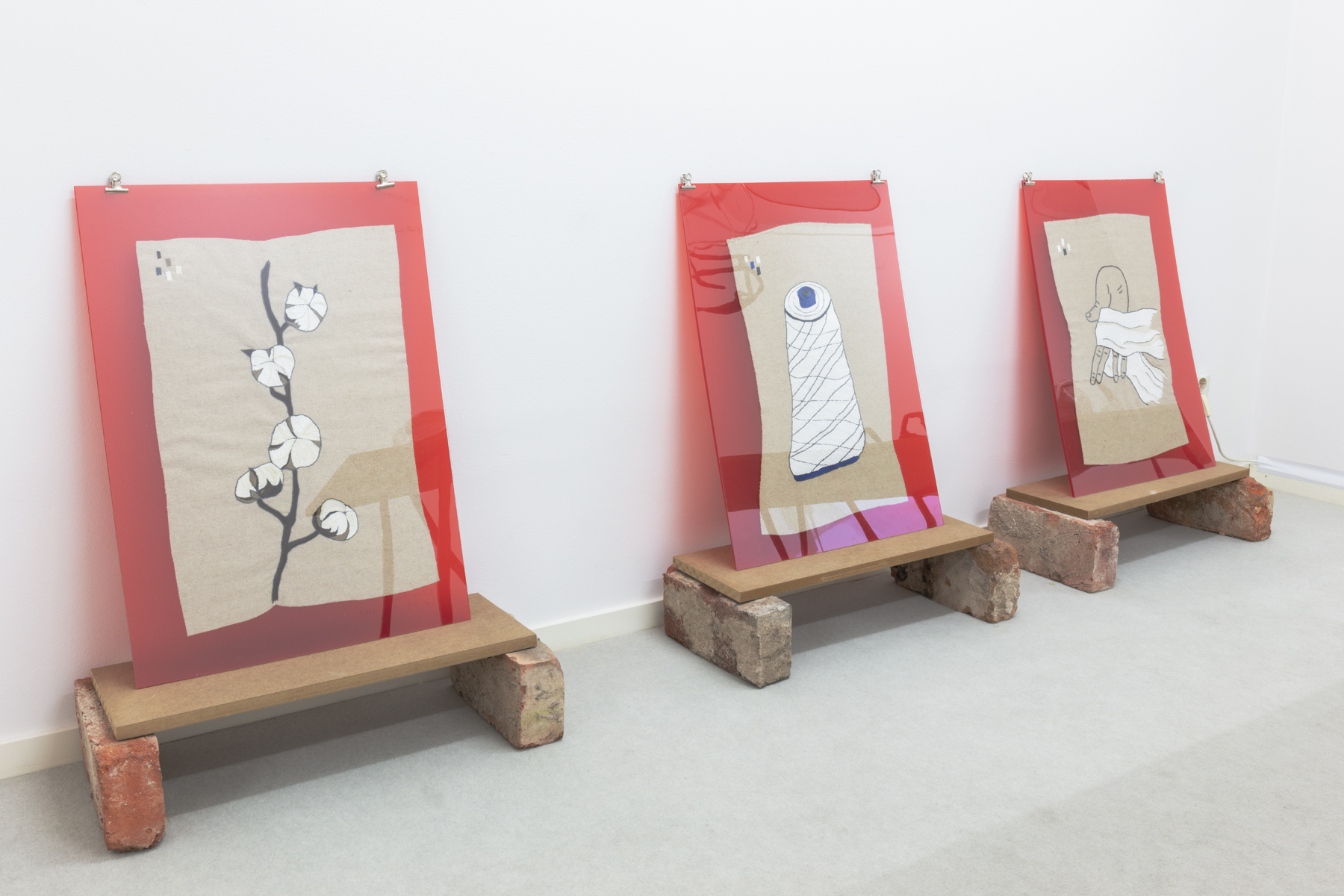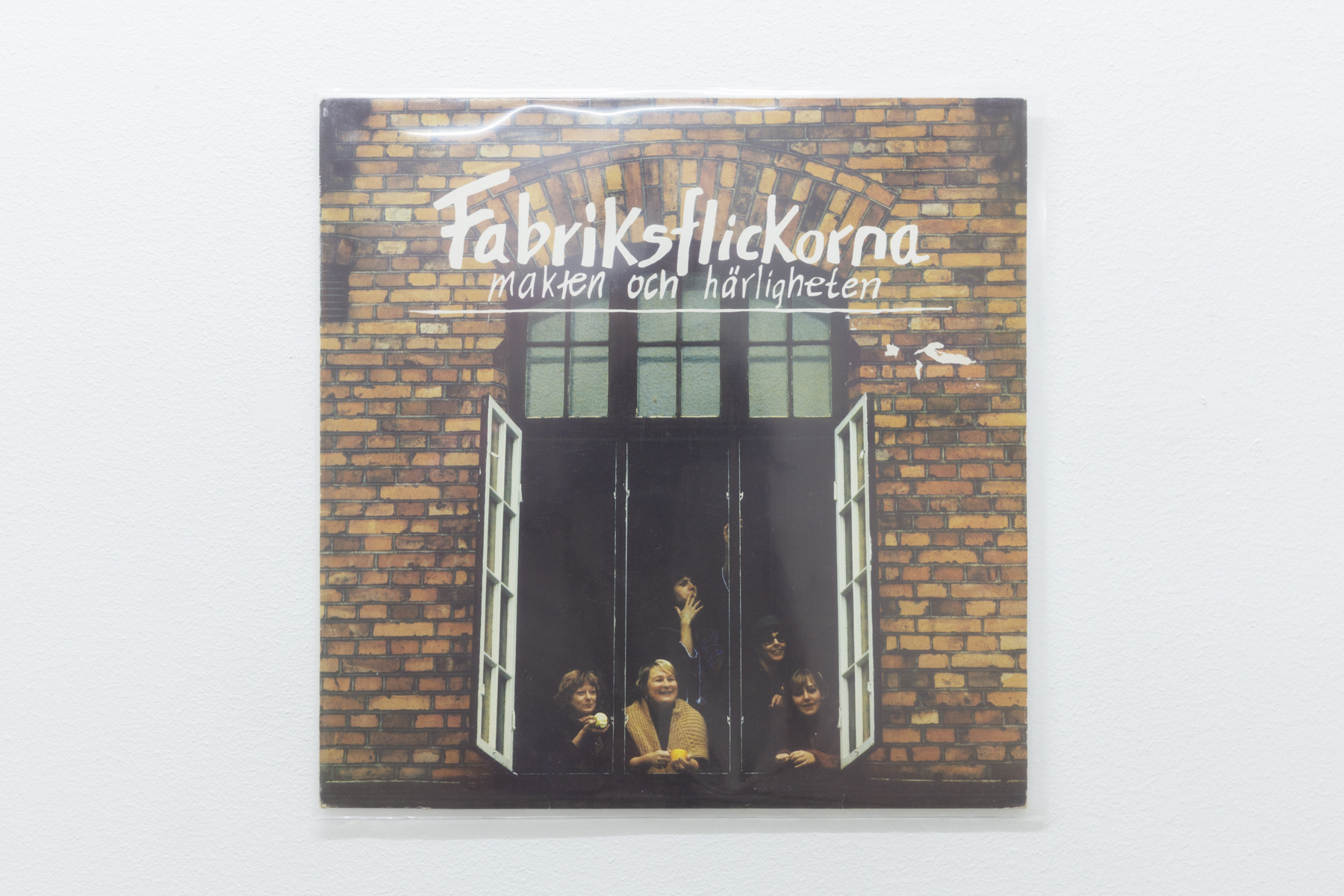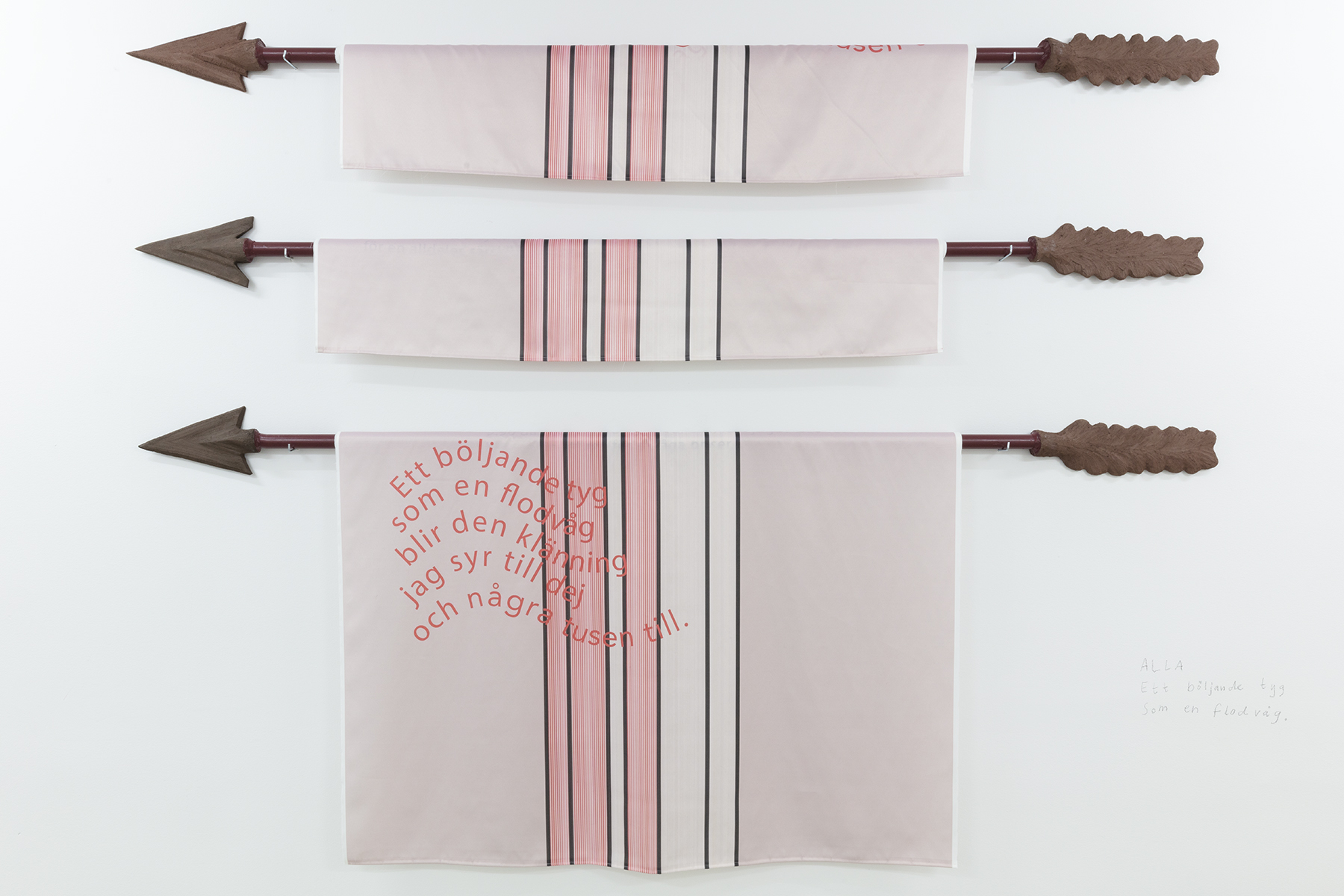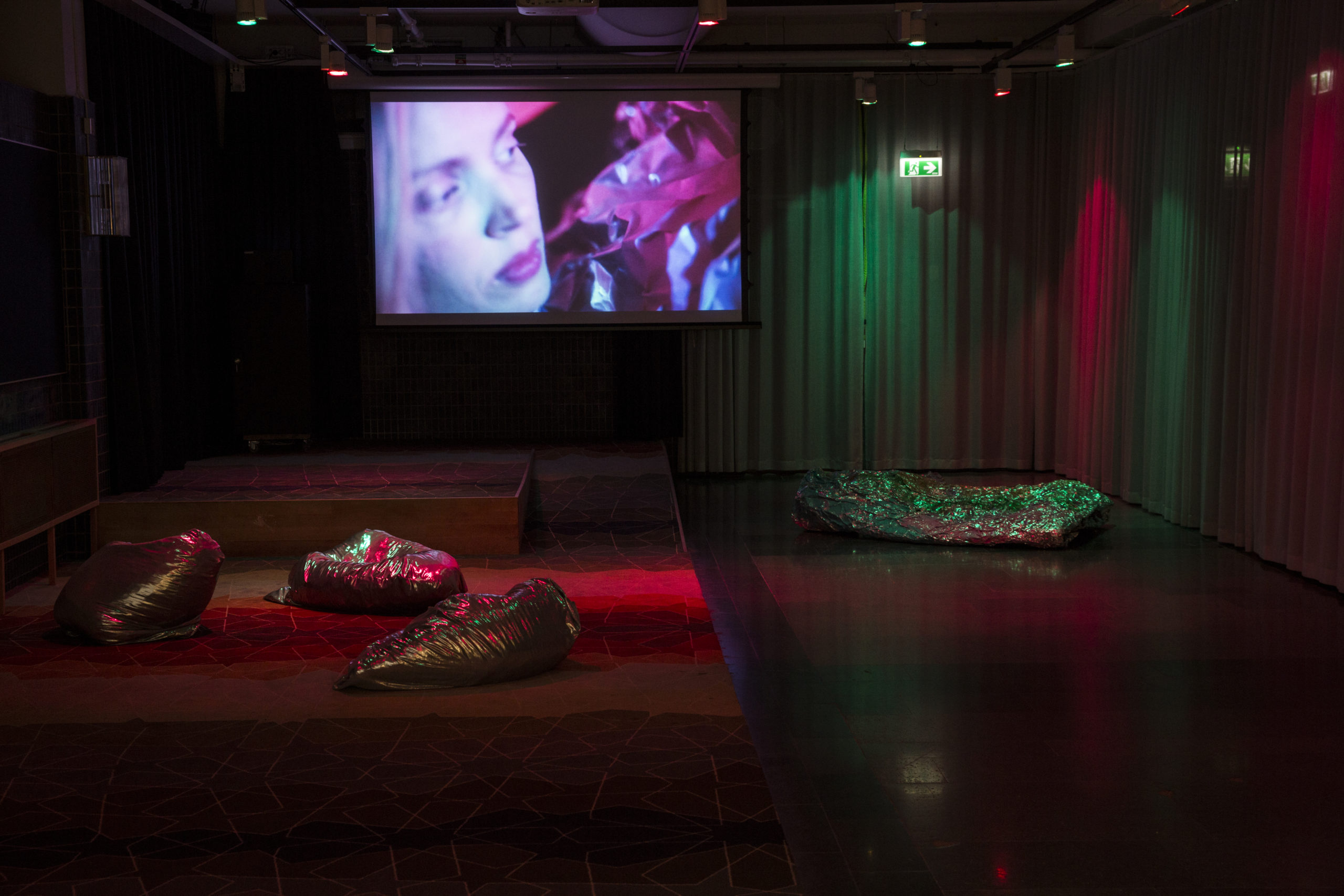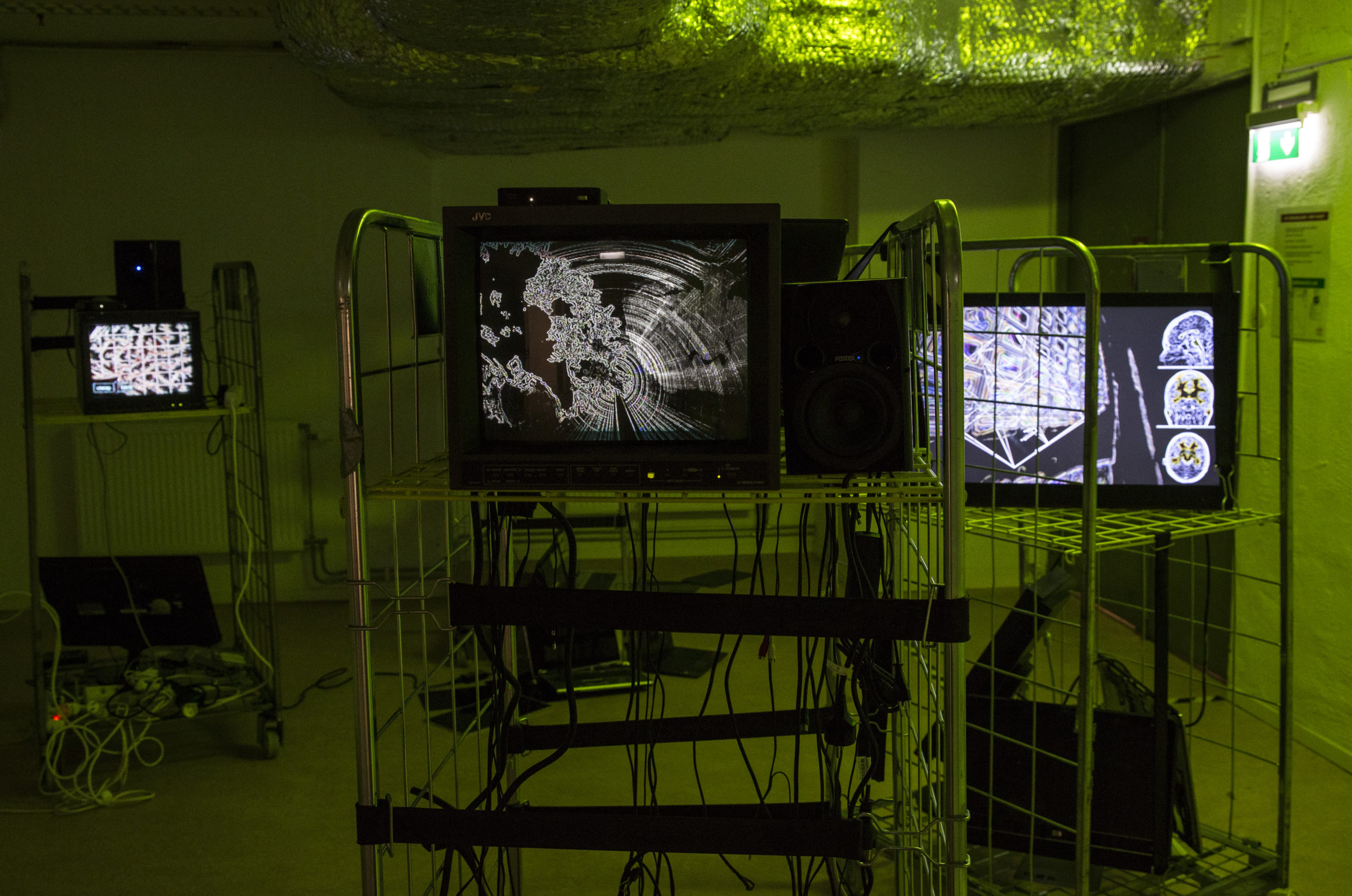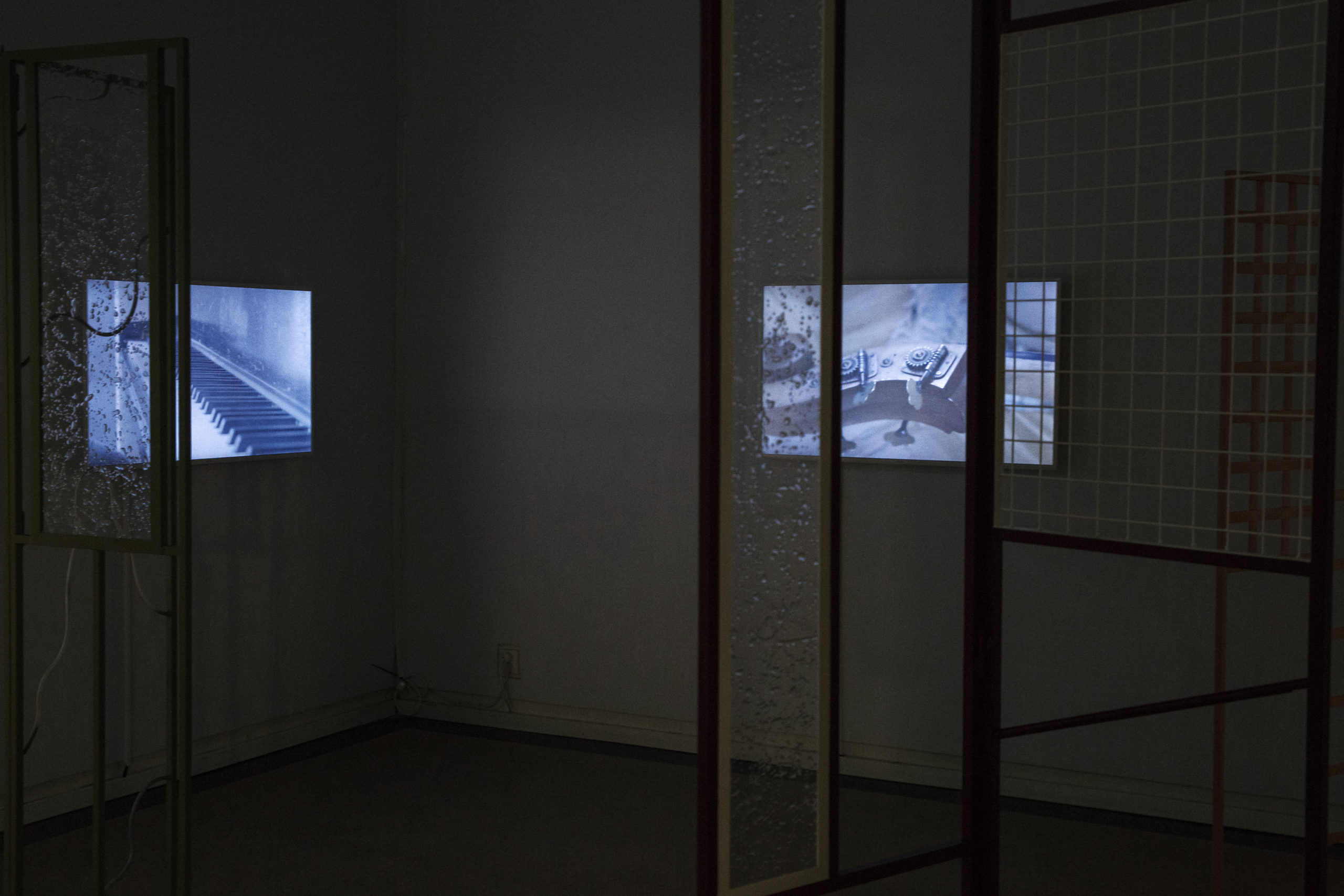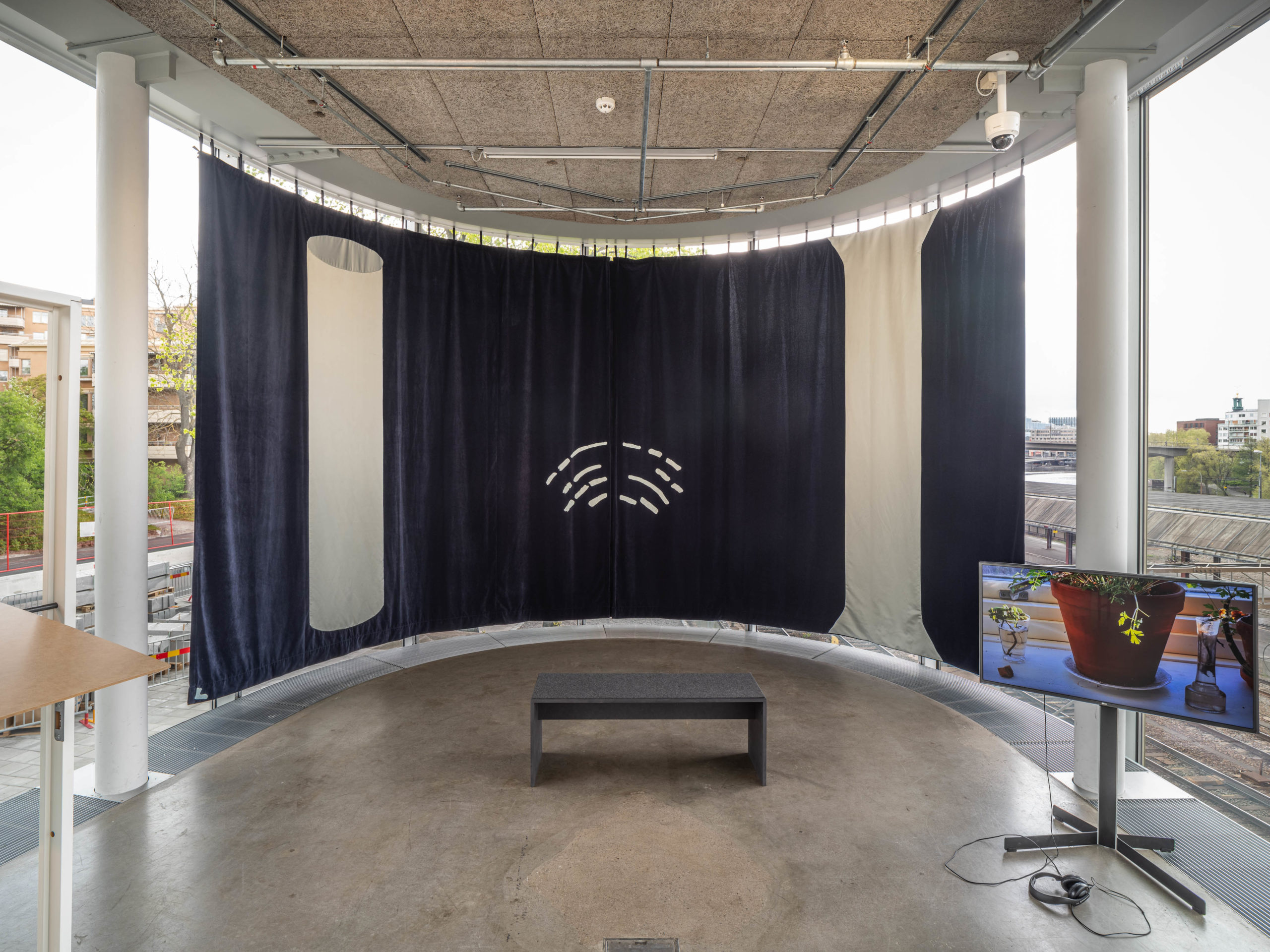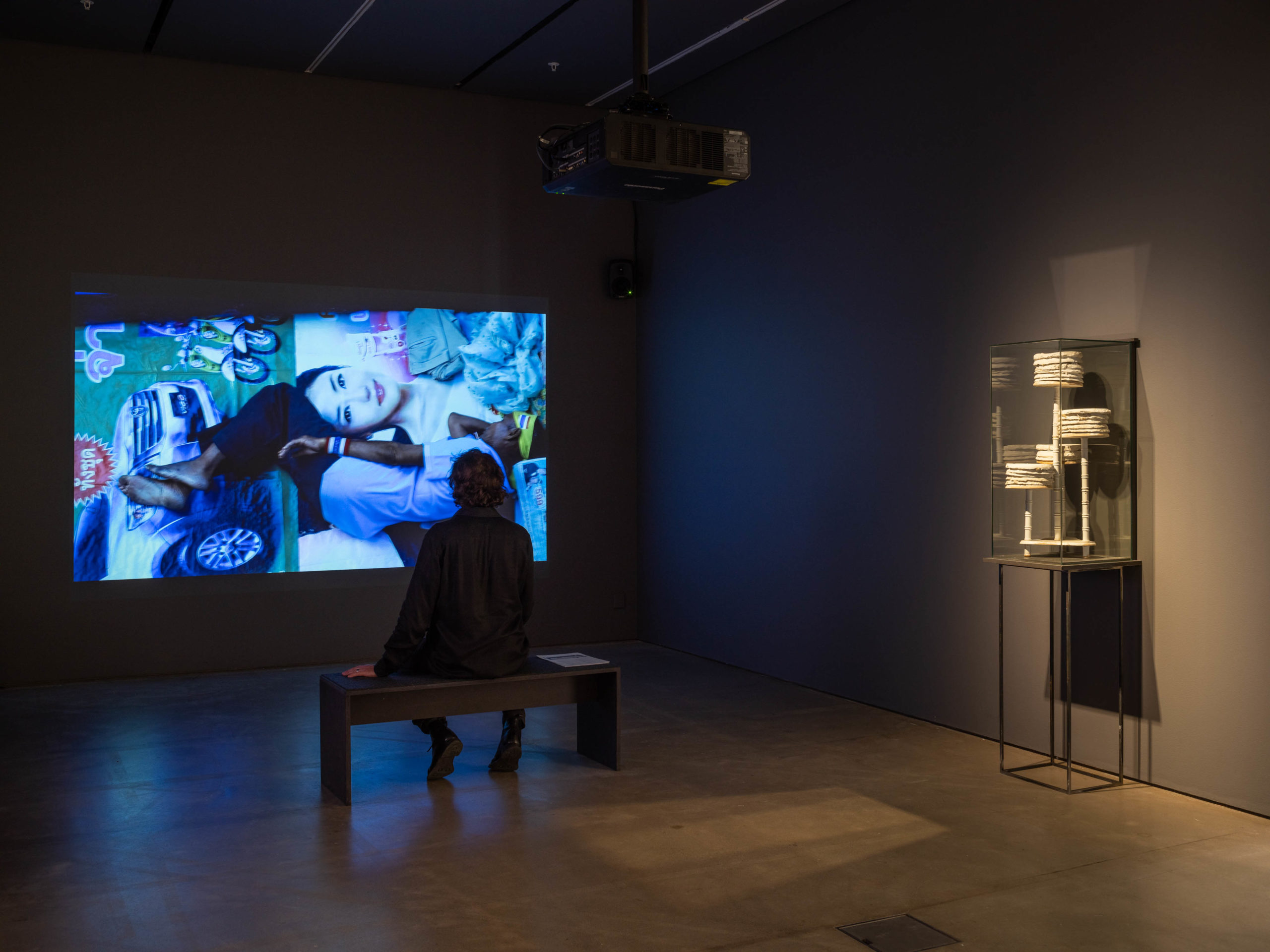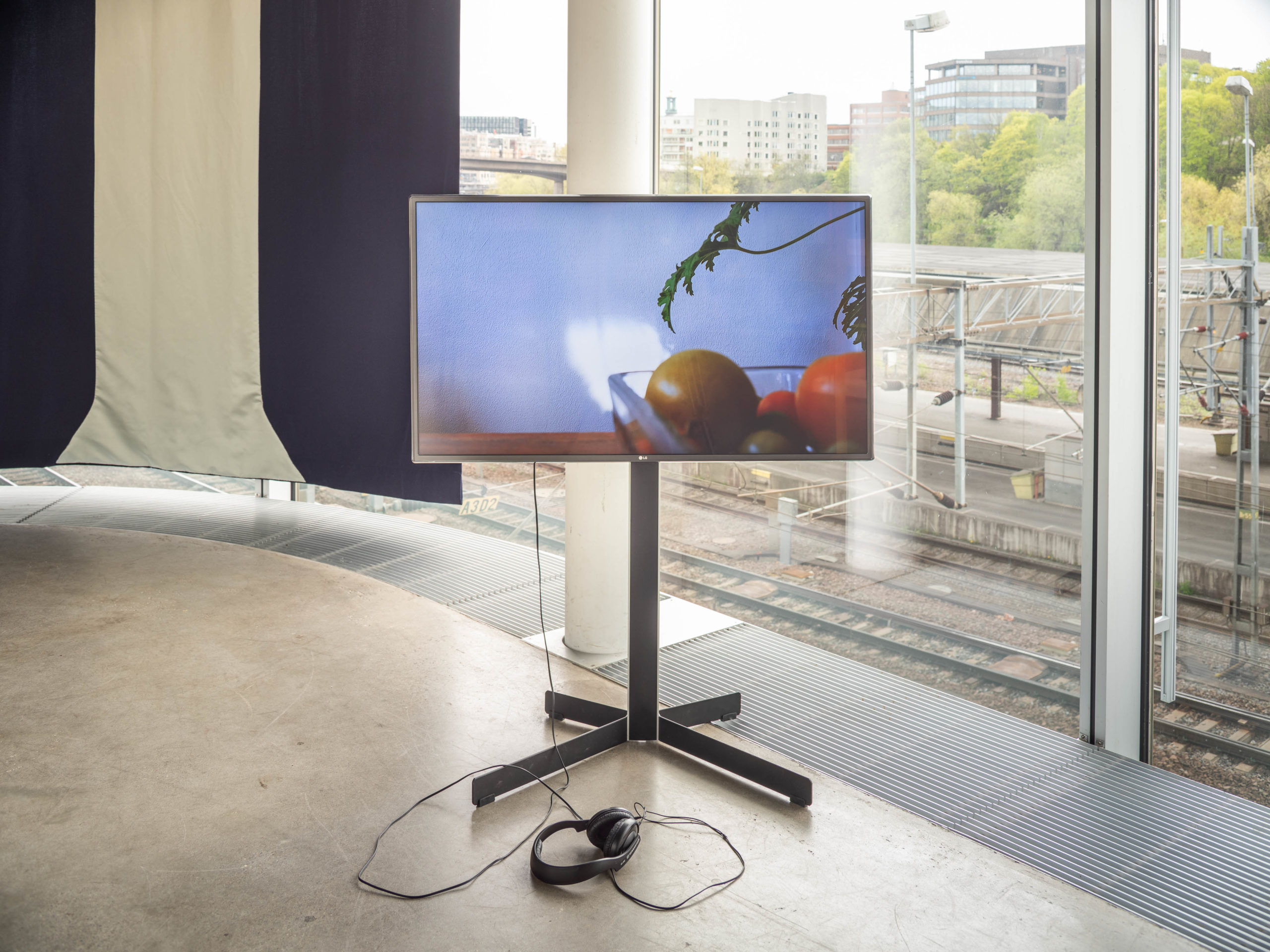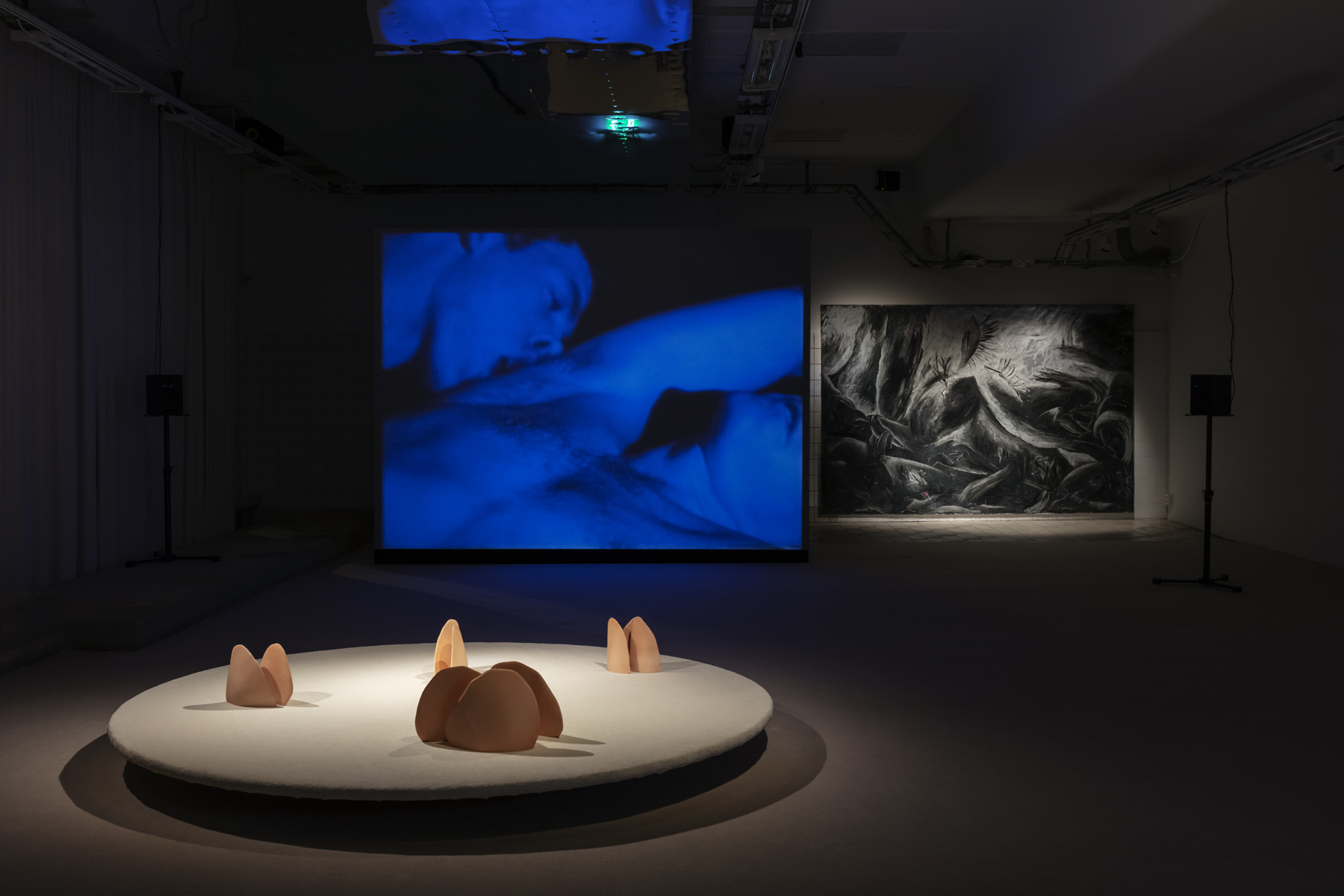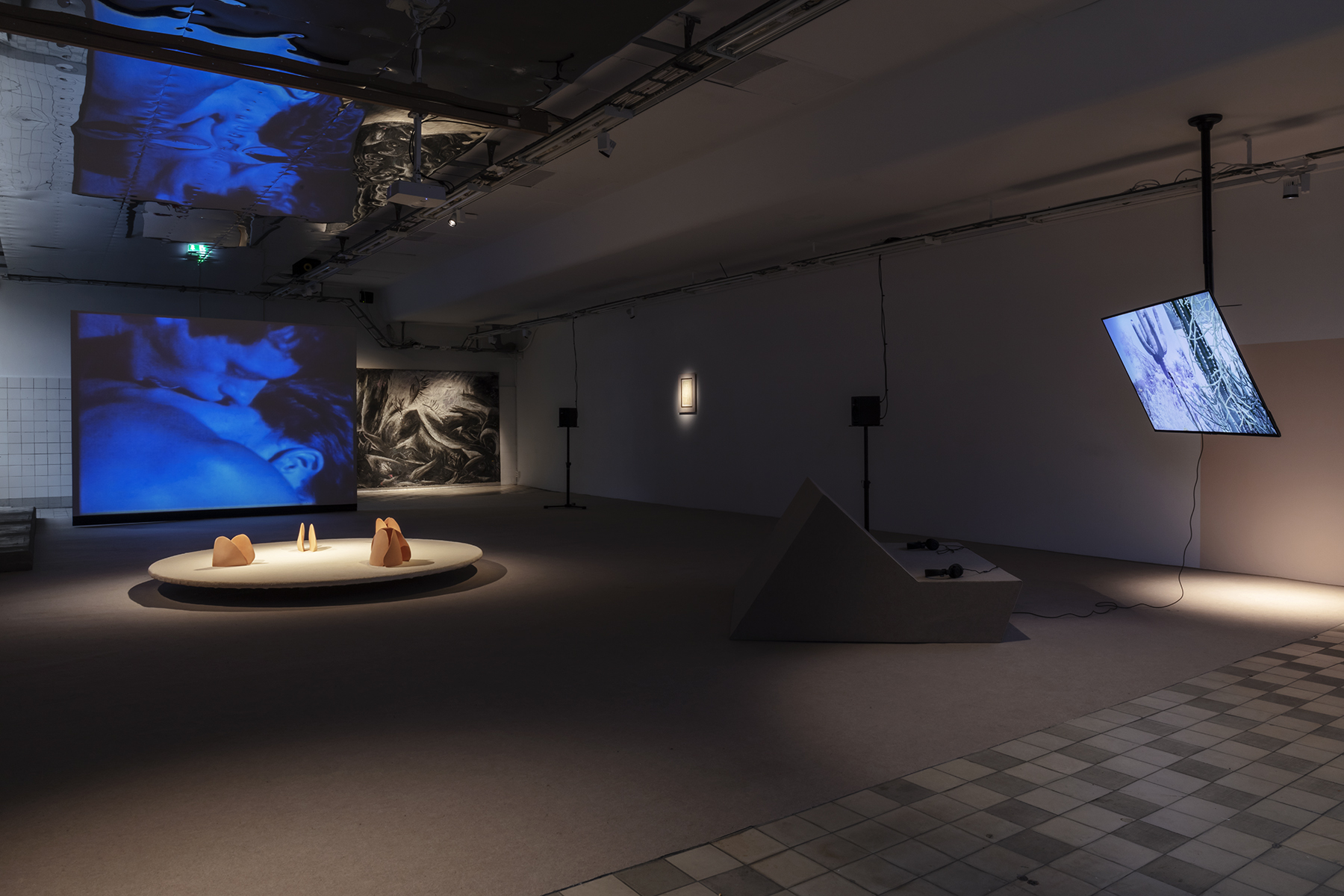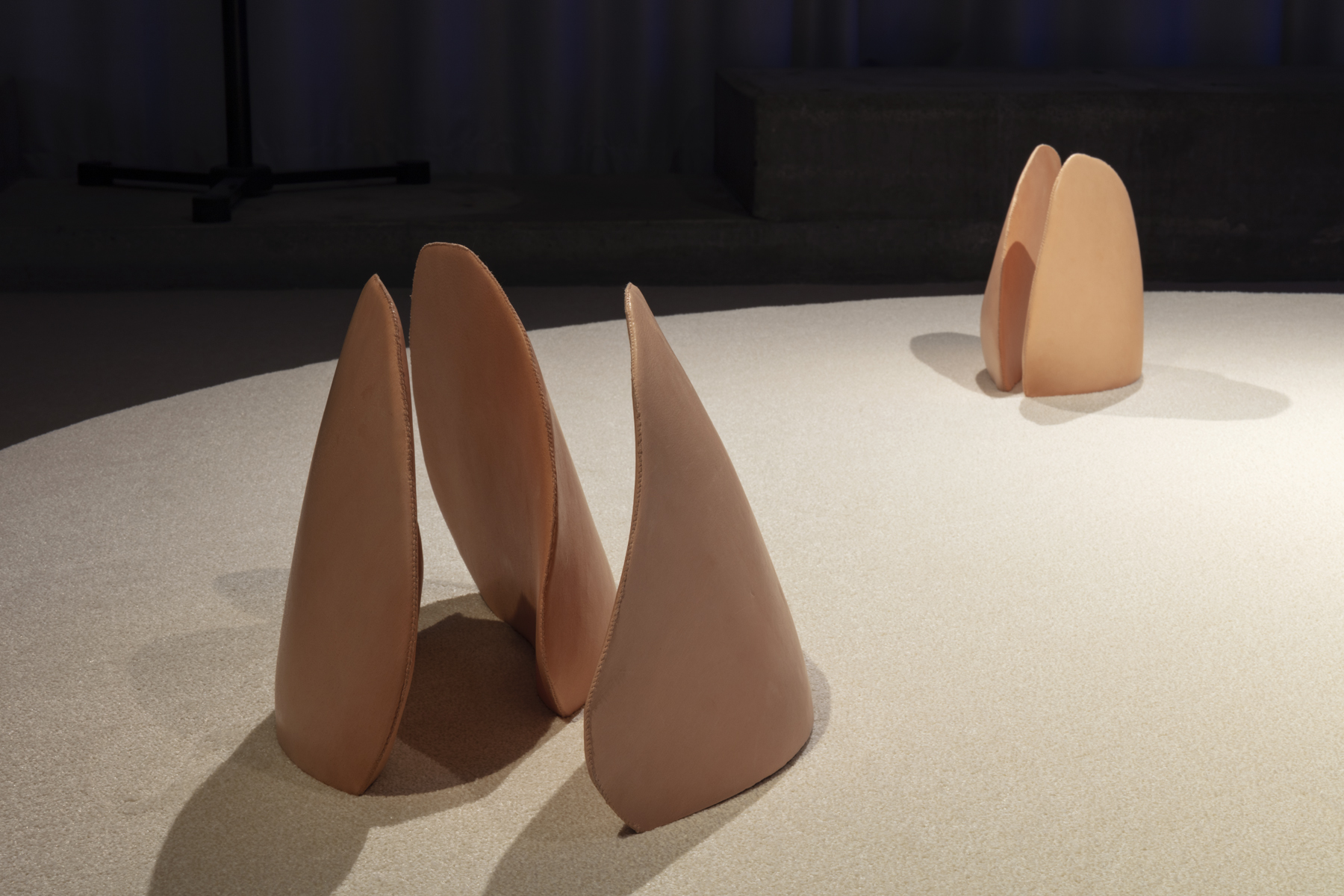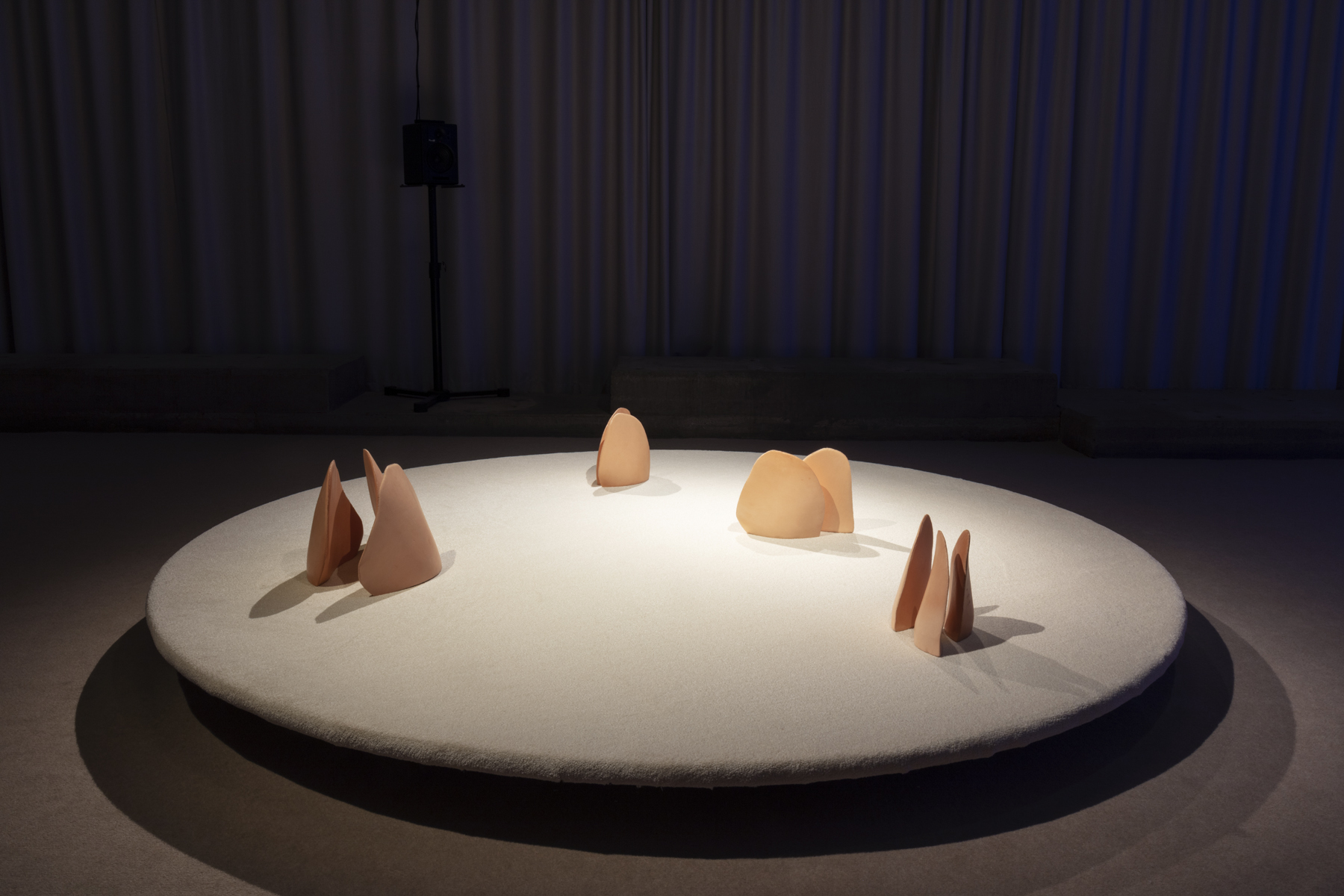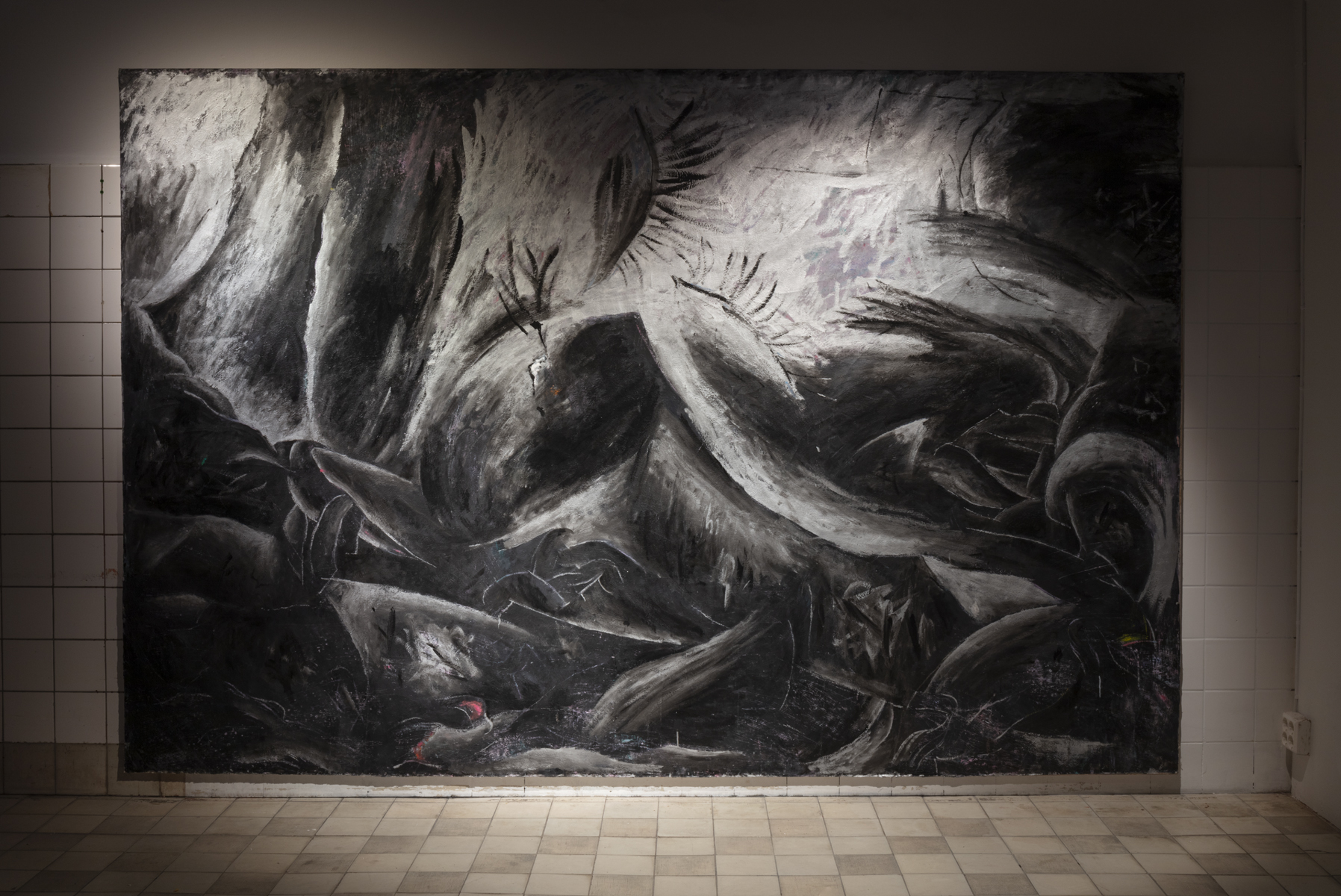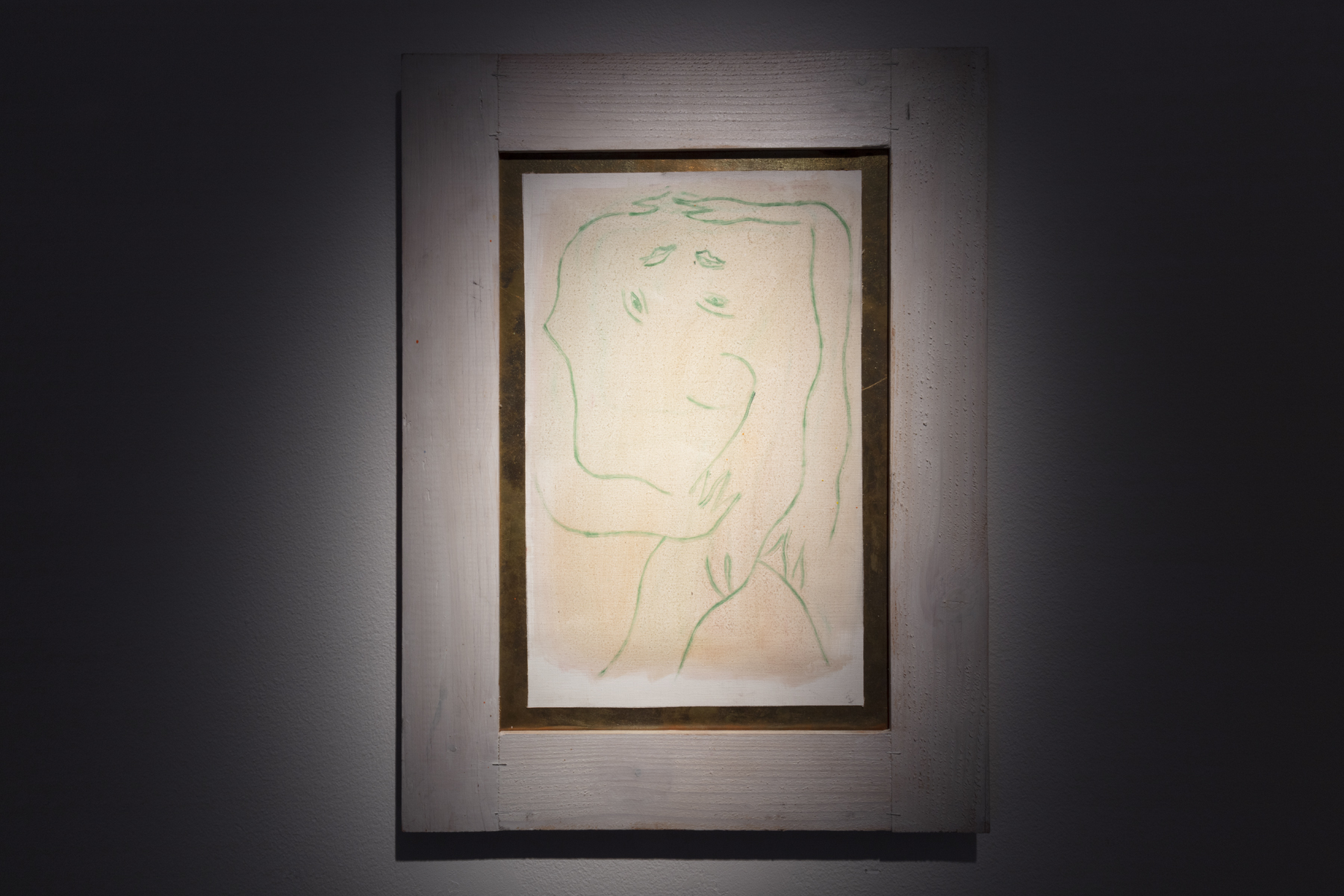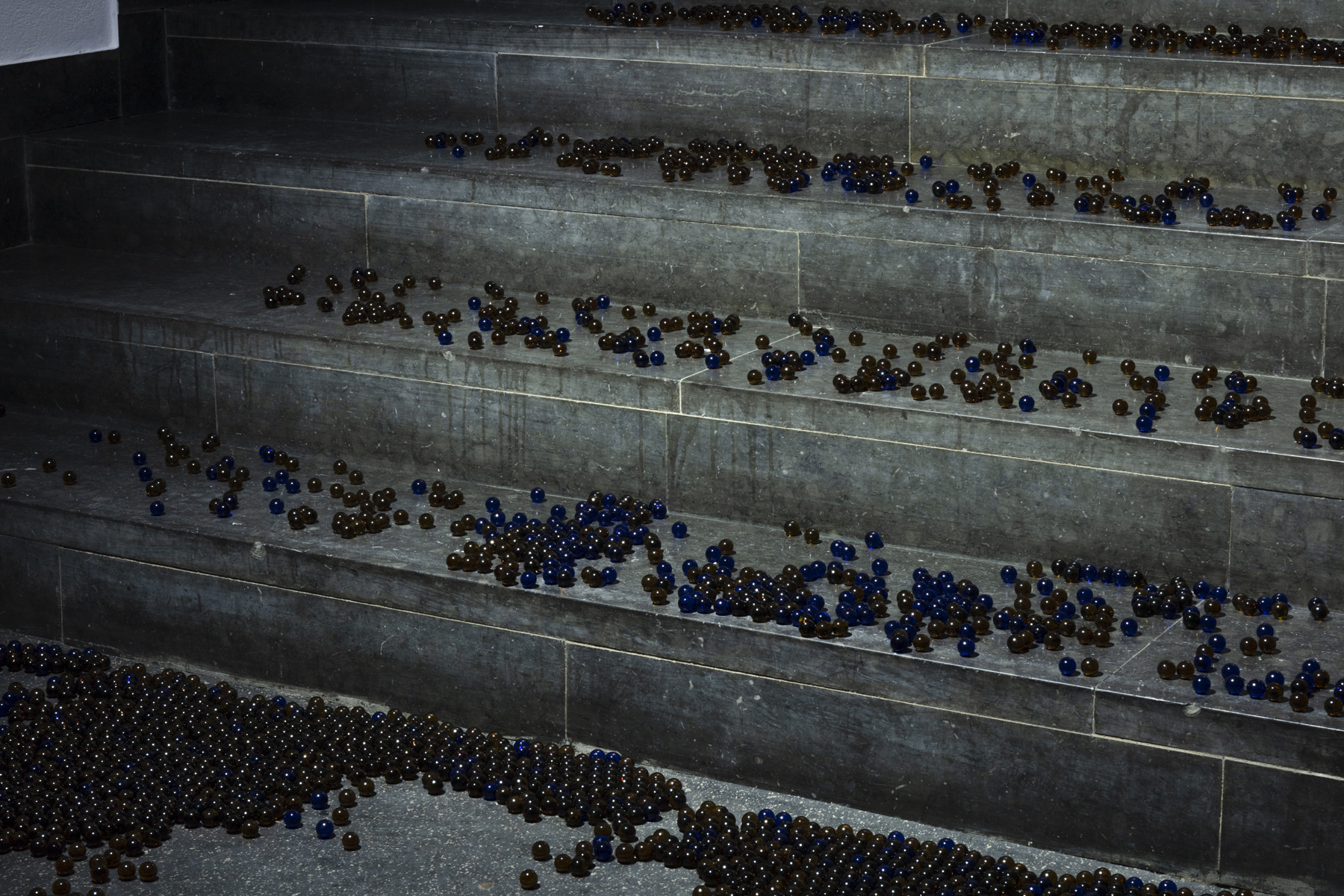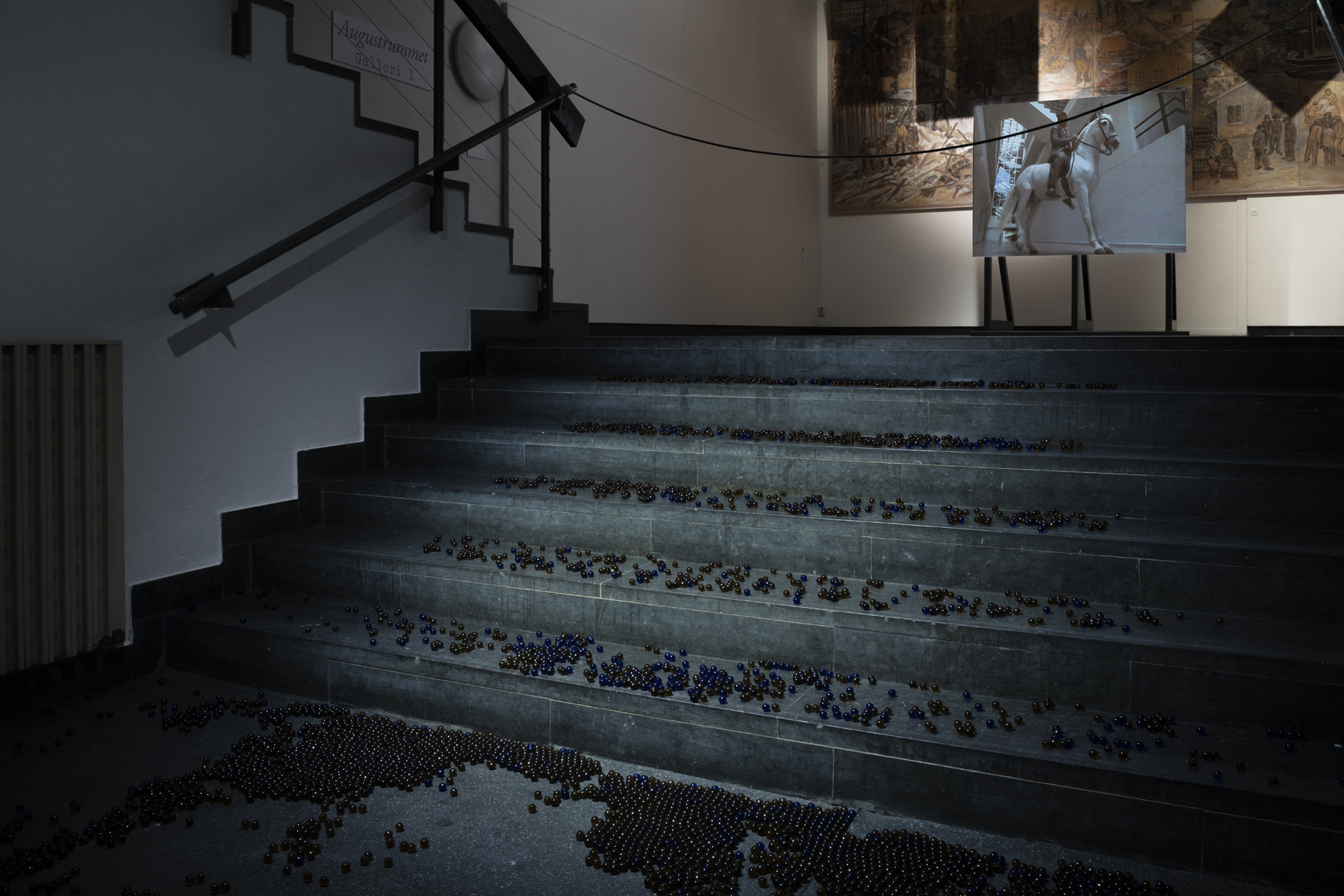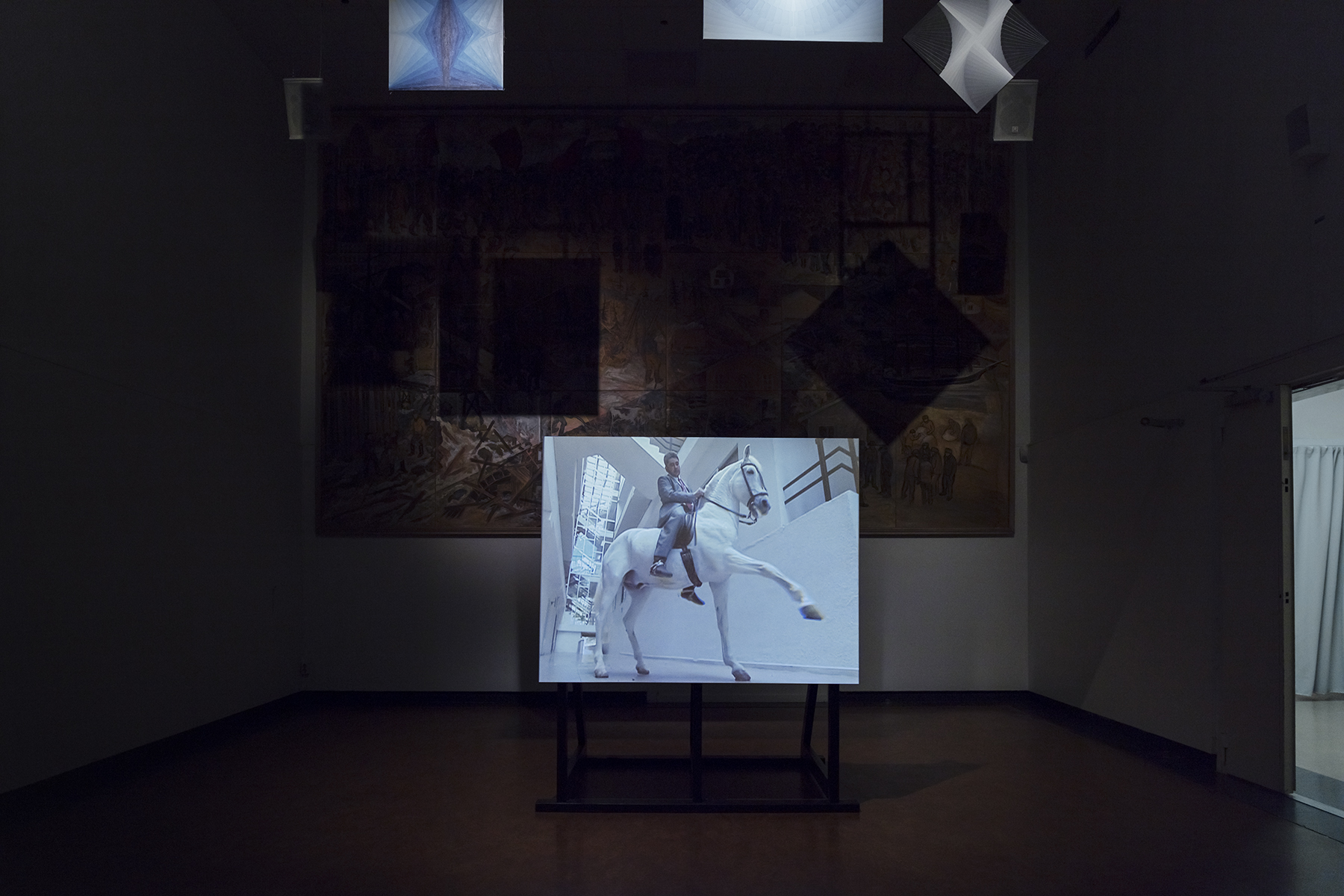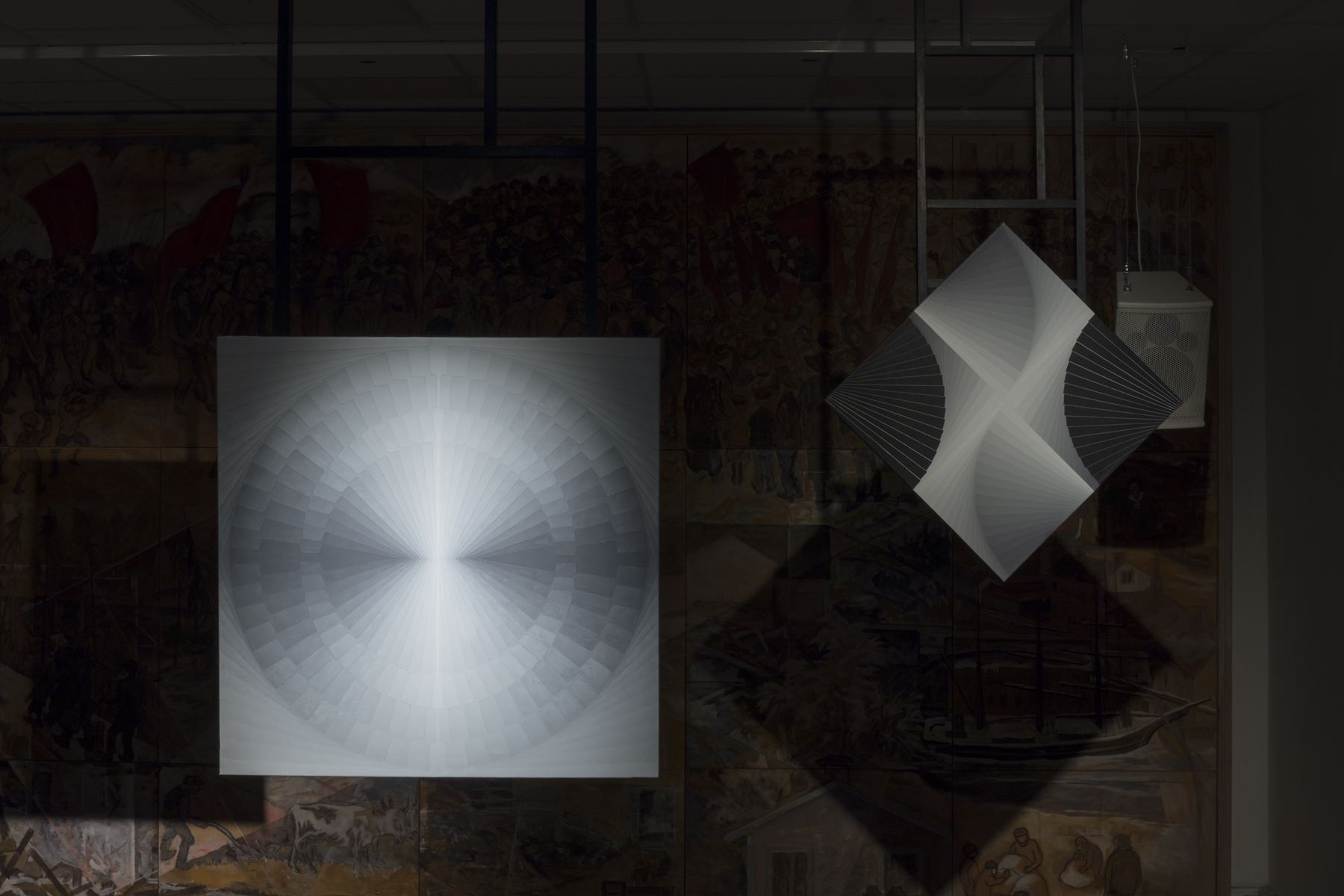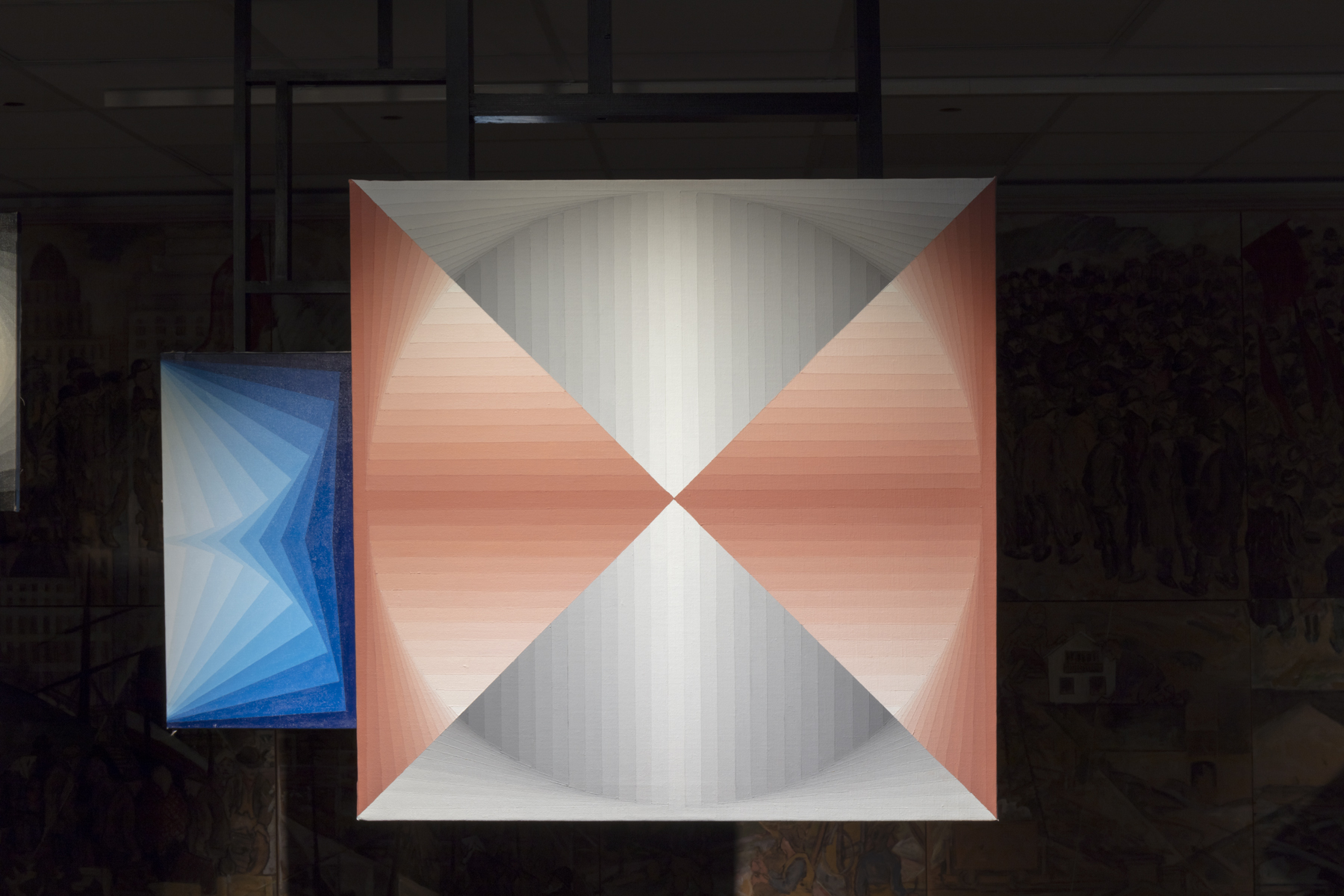Adriana Monti, Annika Elmqvist, Ben Cain, Benedetta Crippa, Christina Zetterlund, David Price, Edith Hammar, Gunilla Lundahl, Jenny Richards, Johanna Minde, Margareta Ståhl, Patrick Lacey and Sarah Browne.
20.11 2019–18.1 2020
Mint, ABF Stockholm, Sveavägen 41, Stockholm
Taking matters into your own hands is a polyphonic exhibition. It brings together stories, handicraft, making, places, illustrations and artworks which spring from workers’ self-organisation during hours of leisure. With Adriana Monti, Annika Elmqvist, Ben Cain, Benedetta Crippa, Christina Zetterlund, David Price, Edith Hammar, Gunilla Lundahl, Jenny Richards, Johanna Minde, Margareta Ståhl, Patrick Lacey and Sarah Browne.
Taking matters into your own hands
Curator Christina Zetterlund, with Annika Elmqvist and Benedetta Crippa.
This exhibition takes as its departure point the project I Glasriket – människan, miljön, framtiden (In the Kingdom of Crystal, the people, the environments, the future), which took place between 1978–83. The project was an initiative of ABF in Lessbo and Nybro, together with the local trade union (Svenska Fabriksarbetare-förbundets divisions 2, 44 and 122). The project’s objective was for workers to take matters into their own hands, and to tell their own stories. Inspired by Gunnar Sillén’s book Stiga vi mot ljuset (We rise to the light) (1977), and then, later in the project, Sven Lindqvist’s Gräv där du står (Dig where you stand) (1978), over 30 study circles were organised to gather stories about work and life in the many factory towns in Småland. The result was a variety of narratives regarding working life and leisure, conveyed through 21 content-rich books, several exhibitions and a bus tour arranged by Riksutställningar (Swedish Exhibition Agency). The report comprise depictions of everything from working conditions, life around the glassworks, the self-organisation of work, politics, leisure time and community to the position of women in the male-dominated factory towns. We are also made aware of the numerous and lengthy struggles for right and for the self-organisation of communities on their own terms.
Illustration is the central medium of this exhibition, a curatorial choice that stems from the study circles themselves where illustration became a tool for remembering. The 21 books are richly illustrated with the participants’ own drawings. On the left wall of the exhibition the illustrator Annika Elmqvist has interpreted photos from the books in the form of glass paintings. She has created an homage to those who wrote history, to those who’–despite difficult circumstances – came together to organise, to form associations, to build their own spaces, to study and to entertain themselves. The project I Glasriket wrote design history. It told of the conditions of glass making, but also of the important but little known practice of sölning (the making of friggers, also known as whimseys or ‘end of day’ objects). In fact, in the book series we find one of the few texts dealing with this important practice. On the right wall of the exhibition the graphic designer Benedetta Crippa expands this excerpt out into a decorative illustration which describes the many facets of the practice. Sölning is something that glass workers devoted themselves to in their own time, during their lunch break. It was a way to learn glass handicraft, to advance further in the hierarchical production process and to earn extra income. At the same time, for the skilled craftsman the lunch break was an hour of freedom in which to follow their curiosity, to test and experiment. Many glass innovations have their roots in this practice. Here, a material culture was formed which included both practical everyday objects and decorative items. In this exhibition we show some examples of this culture. However, this form of sölning is found in neither museums nor history books –only in the glassworkers’ own homes. They can therefore be thought of as a form of ghost within traditional Swedish design history.In the exhibition you can imagine them through Benedetta Crippa’s illustrations.
“More dust in our houses, less dust in our brains” – The 150 Hours
Organized by Jenny Richards and Sarah Browne, with Adriana Monti
Adriana Monti’s film Scuola Senza Fine [School Without End] is an exploration of a group of women who were part of the important Italian workers’ study movement, 150 Hours. The 150 Hours was the name of a contract that meant workers were entitled to 150 hours devoted to studying on ‘company time’. It was an agreement won by Italian car and steel workers in 1973. The 150 Hours model quickly moved to other industrial sectors, as well as farming, and was later extended to include housewives and the unemployed.
Central to the 150 Hours was that study should be non-vocational, meaning it was not intended to improve productivity at work: rather, it was intended to be paid time to discuss working conditions and feed personal and collective growth. The 150 Hours courses were influenced by the work of Brazilian educator and philosopher Paulo Friere and so were focussed on the reflection of lived experience through oral history, discussion and writing. This was grounded in a critical enquiry into the question of whose knowledge, and what forms of knowledge, are valued in society. Traditionally not part of the factory unions, the significance of the 150 Hours coming to include unpaid women in the home was a radical recognition of cleaning, cooking and caring as work. These women, living outside of urban centres and previously pushed behind the figure of the male worker, like ghosts of the workers’ movement, materialised through 150 Hours and fed their experiences and voices into the growing feminist struggle.
Scuola Senza Fine produces a polyphonic expression of collective experience, where the individual is entwined within the collective, felt vividly during the shared intimacy of eating together during the study sessions. The chance to view this film today at Mint, ABF Huset, built for workers’ education and collectivity, offers a reflection on the history of workers’ struggle. The 150 hours sits in contrast to the image of the worker presented in the painting fixed on the wall in the same room. It also diverges from the contemporary workplace’s offer of individualised care of workers on the job, through discount gym memberships, for example, or a course in mindfulness to deal with stressful working conditions. Such contemporary approaches seek ‘not to change industrialized socio-political structures and environments, but to enable individuals to relate differently to these contexts.’ What strategies are there that build space and time to question what it means to define and refuse the alienating affects of work today?
As part of the ongoing film series Hands at work, organised by the artist Sarah Brown and the curator Jenny Richards, and Richards reseach project Outsourcing the Body.
Scuola Senza Fine is distributed by Cinenova. Cinenova is a volunteer-run charity preserving and distributing the work of feminist film and video makers.
Training – Small Semi-Skilled Tasks: Units of Exchange, Labour of Trying, Useful and Non-Useful Goods, Caring for Cast-Offs
Organised by Patrick Lacey and David Price, with Ben Cain
In conjunction with the opening, a release of artist Ben Cain’s book Uses of Leisure will take place, in collaboration with artist and writer David Price and designer Patrick Lacey (Åbäke). The book is a loose aggregate of Ben Cain’s practice from the past ten years or so, with thirty projects distributed according to a subjective categorisation of work / leisure / rest. He has recurrently explored art’s ambiguous relationship to industry, commodification and immaterial labour, and is interested in how artworks might pose questions about what we think they are doing and, by implication, our role as viewers in their social and cultural production. The project also takes on a spatial form through a portable installation that on the opening day will spread out on the floor of the August gallery room. “Having been made in order to fit into a small suitcase that is then carried from London to Stockholm where the objects are laid out in the form of a street stall, it’s hard for me not to think of the travelling salesman, perhaps even Arthur Miller’s Death of a Salesman (in part about the links between changing production methods and identity), and ideas about how material is managed and exchanged between people, about how material itself might mediate. The objects shown include products of creative labour and industrial labour, and products that seem to evidence no labour or physical work at all, miraculous objects. Some of the objects on display are actually discarded try-outs taken from wood and steel workshops. These discarded parts have been carefully selected, sand-blasted or polished, and then powder-coated or painted. The method of arrangement involves a type of framing that draws attention to the attempts made in the pursuit of getting something right, learning something, figuring out how to work with tools, materials, and colours. The work is comprised of exercises or sets of found and purpose-made objects – tests, models from an actual workplace and from a workspace in my head. Collectively they present a model of a studio or a nomadic workshop, one which is concerned with labour that isn’t very productive.” With support from Iaspis
Place for craft: Jokkmokk
With Edith Hammar and Johanna Minde
The exhibition also presents contemporary handicraft by Johanna Minde and Edith Hammar – 2019 stipendium recipients of Slöjd Stockholm’s residency ‘Plats för slöjd’ (Place for craft). Their work has taken shape during the autumn in dialogue with Jokkmokk’s local context and landscape, more specifically at the Sami educational centre. The school offers education in duodji/duodje, meaning traditional handicrafts, (leather, textiles, wood/horn); Sami languages: Northern-, Lule-, Ume- and Southern-Sami; reindeer herding and Sami food crafts.
Johanna Minde: “I work with traditional and experimental methods within duodji. Above all I explore the intersection between duodji, design and architecture. During the residency period in Jokkmokk, through various tanning methods I investigated the possibilities of using reindeer skins in design. By preparing skins with variations on the type of process and degree of tanning penetration I have tested the reindeer’s skin’s ability to transmit light.”
Edith Hammar: “The cabinet is built in pine, without screws or hinges, but built with glue and wooden dowels. The motif is quite spontaneous, autobiographical mixed with wishful thinking, just like my drawings in ink. When I was satisfied with a sketch, I used chisels of different sizes to cut out the images. While working in Jokkmokk, I was surrounded by waterways and forests, and I thought a lot about my grandfather, who often told me stories about when he emigrated to Canada for work. His best trick as a log-floater was to go down in the splits with each foot on a log, in the middle of the water.”
